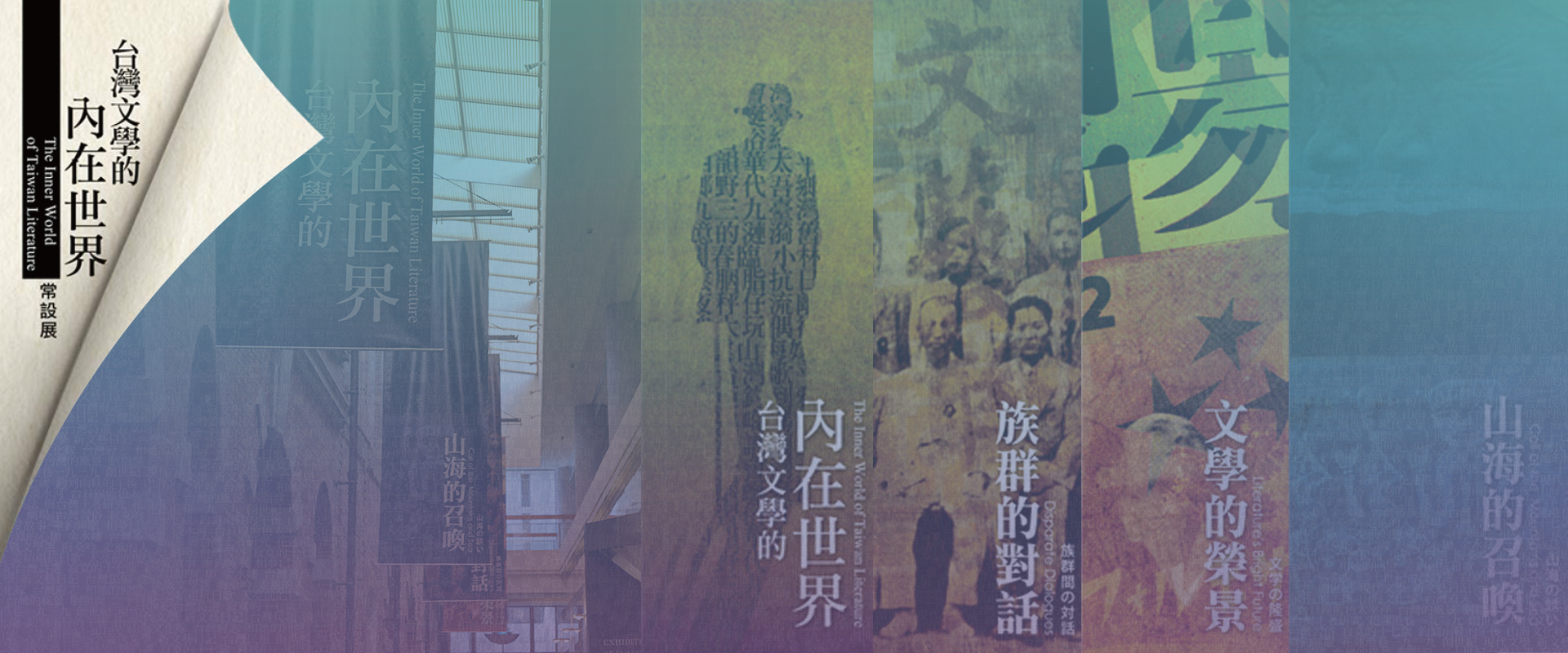
Taiwan's heart beats with the incalculable joys, sorrows, loves and disappointments of its many groups. Authors of different ethnic backgrounds and experiences have through the generations invested their talents to sense and put into words the pulse that defines their place and time. Themes of discord and reconciliation hold prominent places in their work, highlighting Taiwan literature's richness and ageless relevance.
The sea embraces Taiwan from all directions. Over its relatively brief modern history, this island, also called Formosa, has been settled and governed by Malayo-Polynesians, Dutch, Spaniards, Han Chinese and Japanese. Each has invested a distinctive language and customs to create today’s unique admixture of cultural traditions and mores. The Taiwan experience has also fostered an evolving dialogue between more recent Han immigrants from China’s many provinces and earlier Chinese immigrants from southern Fujian Province and the Hakka, a Han Chinese subgroup. Post-1949 political and social upheavals caused further divisions and inter-group suspicions. At the turn of the 21st century, cross-border labor migration and the influx of immigrant women from Southeast Asia and elsewhere were again both mixing the ethnic pot and fostering new cultural challenges. The “waters” of many ethnic and cultural streams nourish our home on Taiwan and give us a complex cultural tapestry of differing backgrounds and experiences.
Taiwan’s heart beats with the incalculable joys, sorrows, loves and disappointments of its many groups. Authors of different ethnic backgrounds and experiences have through the generations invested their talents to sense and put into words the pulse that defines their place and time. Themes of discord and reconciliation hold prominent places in their work, highlighting Taiwan literature’s richness and ageless relevance.
Literary historian Huang Teh-shih wrote in a 1943 issue of Taiwan Literary History that the multiple immigration streams throughout its history had bequeathed the island a highly complex character. He noted that Taiwan’s literary output was concentrated into two archetypical genres, namely “nostalgic” and “inter-ethnic integration, subjugation and resistance”. The former focuses on remembrances of homes and lands left behind in the move to a new life on Taiwan; The latter addresses the trials and tribulations of weaving one’s own threads into the Taiwan tapestry. These genres are equally apparent in poetic verse written in the 17th and 18th centuries, Colonial Era “neo-traditional” literature, the postwar writings of Taiwan’s refugee Mainland authors, and Malaysian-Chinese authors writing in Taiwan.
Taiwan society today is increasingly ready to accept and even embrace external cultural mores. Our authors observe record and interpret for us the whispers of history. They also confirm the value of cultural diversity. The idea of a multiethnic melting pot may aptly be used to describe the ebb and flow of literary culture development on Taiwan as well as to expound upon its present and future. This permanent exhibit is designed to open a window on the rich diversity of Taiwan literature’s inner being. The exhibit’s three sections, The Call of Opportunity, Disparate Dialogues, and Literature Victorious, center on key works of literature that address the three issue areas of nature, society and modernization. When contrasted against contemporary political and economic realities, literary efforts offer shining examples of their authors’ spirit and hope. It is the author’s desire to achieve mutual understanding and explain perspectives and opinions that has made Taiwan’s literary garden bloom and flourish.
更多
At the intersection of latitude 23 north and 121 east, Taiwan is strategically located at the crossroads of the world and naturally blessed by the heritage of numerous cultures. Ilha Formosa, our island home, is the beautiful backdrop against which countless stories of immigrants of vastly different cultural and ethnic backgrounds have played out. So many touching stories, so many indelible memories.
Considering the interplay between natural topography and literary creation, all who journeyed to Taiwan had to cross the “Black Ditch” as the fickle waters of the Taiwan Strait were known. Some came to pursue new opportunity; some came to escape the dust of urbanity; others came seeking refuge from conflict, while still others arrived out of political expediency. Immigrants through the centuries left oral and written tales. It is these that have been woven into a moving and genuine body of homegrown literature that communicates the hopes and dreams of our forebears who sought a fresh start in Taiwan. By embracing the full spectrum of the Taiwan “experience,” Taiwan literature expands cultural horizons, further leavens literary traditions, inspires the spirit and enriches Taiwan’s uniqueness.
Kraken Island Rising spotlights early Malayo-Polynesian immigration to the island and the experience of the first Han immigrants in the 17th century. Island Soul introduces the emotions and experiences underlying Taiwan’s nostalgic literary genre. Formosa of the Mind shows how authors have deftly captured Taiwan’s natural wonder in words, described the complex feelings people have had about their island home at different periods in history, and captured in literature Taiwan’s changing zeitgeist. We hope the works introduced in this section help visitors better appreciate the breadth and diversity that is the essence of Taiwan literature.
A verdant island rises high above the waves. The arrival of different peoples spurs creation of distinct mythic tales, stories and literature. These were catalysts helping create an increasingly well-defined “Taiwan” identity. It is the myriad cultures blended into the Taiwan melting pot that give island literature its narrative and descriptive depth.
Indigenous Malayo-Polynesian culture and nature’s rhythms lie close to the unadulterated heart of the human experience. Oral traditions, tales of adventure from the Age of Exploration and other outsider stories of indigenous life and ways praise the value of Taiwan’s forests, mountains and lush lowland plains. Seeking profits from new lands, Spanish and Dutch traders build fortified settlements at San Salvador in Keelung and Zeelandia at Anping near Tainan. These Europeans traded with indigenous plains tribes for deer pelts, minerals and other items. After Taiwan’s absorption into the Chinese realm in the mid-17th century and through fifty years of Japanese colonial rule, island authors tended to describe indigenous ways and customs through the prism of “civilization” and as one of many narratives in the story of human development and survival.
The Heavens created Formosa, the land sustains man from generation to generation. Indigenous oral traditions have much to say about man’s origins, how the gods came to be and the creation of the natural world. These stories, deeply respectful of nature, sustained tribal memories and reinforced each tribe’s uniqueness. The ancestors of Taiwan’s indigenous peoples and later Han Chinese homesteaders both arrived here after a risky journey across the waves. Whales, the gentle leviathans beneath Strait waters, showed many the way forward onto Taiwan’s shores.
The natural synergy between Taiwan’s indigenous peoples and their environment features prominently in early writings on the island. Early third-person writings about Taiwan’s indigenous peoples represent a hodgepodge of personal experience, retelling of others’ stories and creative imaginings. Authors often described the life and ways of native Taiwanese using florid prose extolling their simple, untainted ways. Headhunting, facial tattoos, communal celebrations, the traditional mouth harp and hunting are recurrent themes in early author narratives.

Lifok 'Oteng, aka Huang Kui-chao (1932 - ); ethnic Amis from Taitung County). Mouth harps are prevalent among most of Taiwan’s indigenous Malayo-Polynesian groups. They are played by men and women, young and old alike, and used in communications and as an accompaniment to music, romance, ceremonies, and dance. Display Accompanied by Mouth Harp Music
(handcrafted by Lifok ‘Oteng)

Tsuyoshi Tamura (1890-1979) was a forestry researcher from Kurashiki, Japan. He arrived in Taiwan in 1928 to survey in East Taiwan for the planned new Tsugitaka-Taroko National Park (Tsugitaka Taroko Kokuritsu Kōen). Scenery of Formosa, published by Yūzankaku Shuppan, Tokyo, compiles many of his sketches and observations from that time.
book; donated by Huang Teh-shih

Ko Pei-yuan (date of birth and death unknown), aka Fu-tzu was a native of Licheng in Shandong Province, China. A Qing government official, Ko was posted to Kavalan (present-day Yilan) in 1835. He served there just one month, and left the island soon after. Outline Description of Kavalan is a personal narrative of his experience, with a particular focus on the region’s indigenous peoples. The poem featured here describes the plight of the ‘cooked’ (i.e., civilized / Sinicized) natives who were the chronic and unwitting targets of Chinese settler schemes and trickery.
Taipei Bank Press, Taipei, 1961; book; donated by Hsu Ping-ting
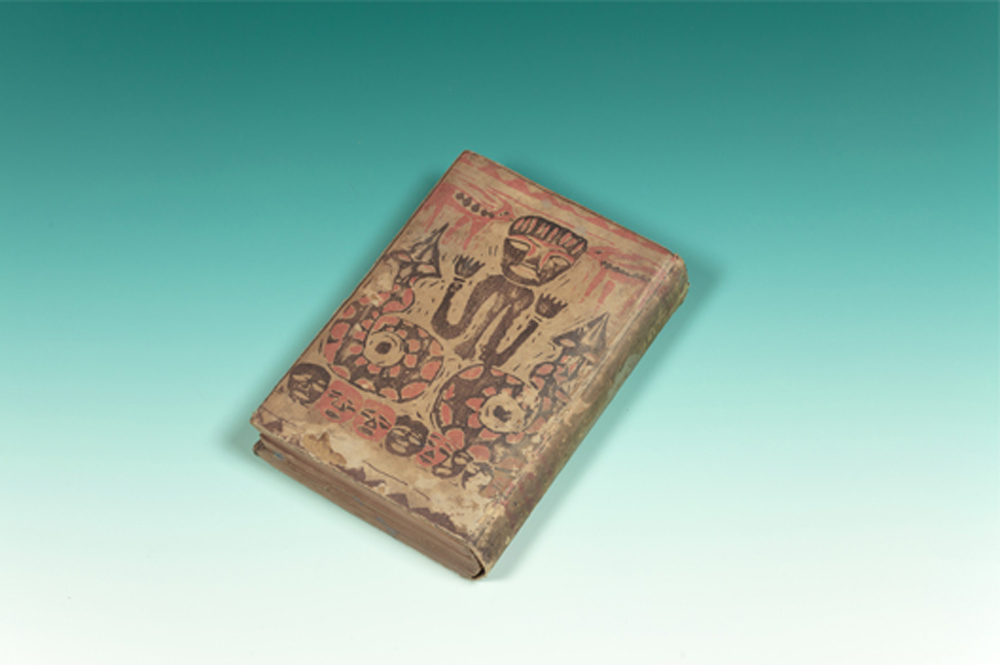
Japanese anthropologists Yūkichi Sayama and Yoshihisa Ōnishi came to Taiwan in the 1910s to observe and record the traditional stories and legends of Taiwan’s indigenous Malayo-Polynesian tribes. One of the tales recounts an Atayal legend about a “pile of pooh” giving birth to man.
1923; Sugita Shigezō Booksellers, Taihoku (Taipei); book; donated by Huang Teh-shih
Starting anew in a strange land, early authors helped capture the social zeitgeist of Taiwan during the harsh and hectic days of settlement. Using their mother tongue, these authors wrote of Taiwan’s majestic mountains and rivers, its scenic wonders and exotic tropical fruit. Works in these early times were of largely two schools. The first looked upon Taiwan with the awe of an outsider. All was strange and new in this new outpost of empire off China’s southeast coast. The second carried the sting of nostalgia for the homeland left behind. Taiwan’s mountain scenery engendered thoughts of home and family beyond the “Black Trench.” Taiwan gradually became a new home that consoled and, eventually, overcame pining for the home country.
Subtropical Taiwan, between Mainland Asia and the Pacific, is a land of incredible landscapes and unique flora and fauna that perennially impresses visitors. Qing Dynasty authors turned their narrative and poetic spotlight on the island’s heralded “Eight Scenic Wonders”, while those in the Japanese colonial period celebrated Taiwan as a Imperial cornucopia of pineapples, bananas and other tropical delicacies. Captivated by what they saw and experienced, these authors presented Taiwan as a land to be explored, discovered and treasured. Authors were among Taiwan’s pioneers and its earliest promoters.
Authors that left childhood homes behind to emigrate to Taiwan have left behind a rich tradition of nostalgic literature. The mid-20th century was a particularly active period for the nostalgic genre, with much ink invested in tales of separation, exile, regret and pining for a home far away. While the emotions stirred by enforced separation don’t fade with time, protagonists inevitably make the difficult adjustment and invest themselves in building a new life in Taiwan.
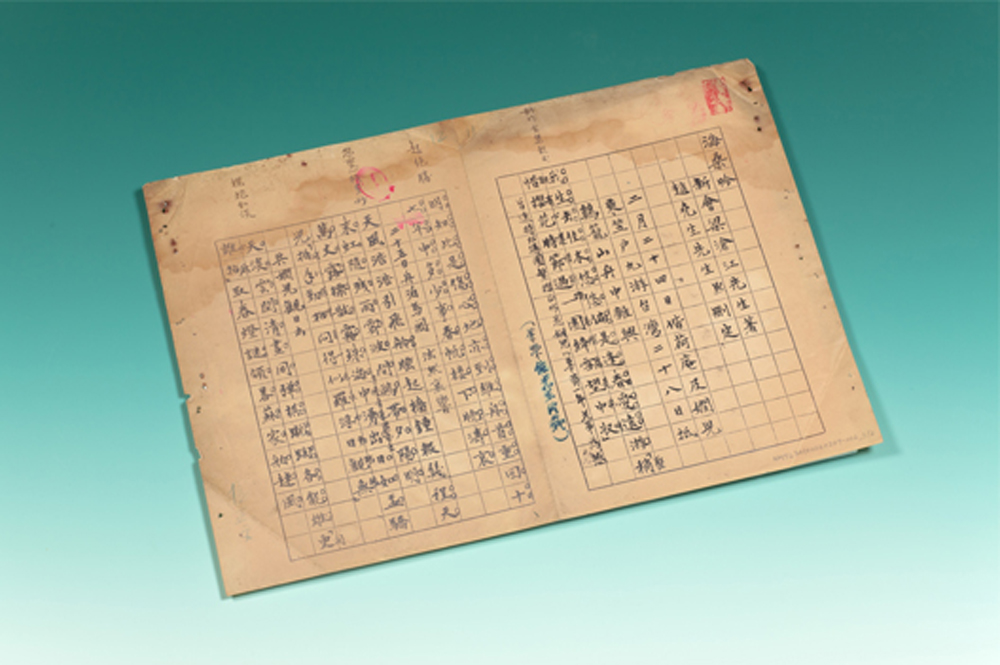
Liang Chi-chao (1873-1929), aka Chuo Ju, was a native of Xinhui in China’s Guangdong Province. He co-authored works with leading Qing Dynasty reformist Kang Youwei and, after participating in the ultimately suppressed 1898 ‘100-Days Reform’, he escaped into exile in Japan. He sailed to Taiwan from Yokohama in 1911 and wrote on his myriad experiences throughout the island in Song of the Great Wide World. Unfortunately, the full text of this work has been lost to posterity.
manuscript (reproduction); donated by Huang Teh-shih
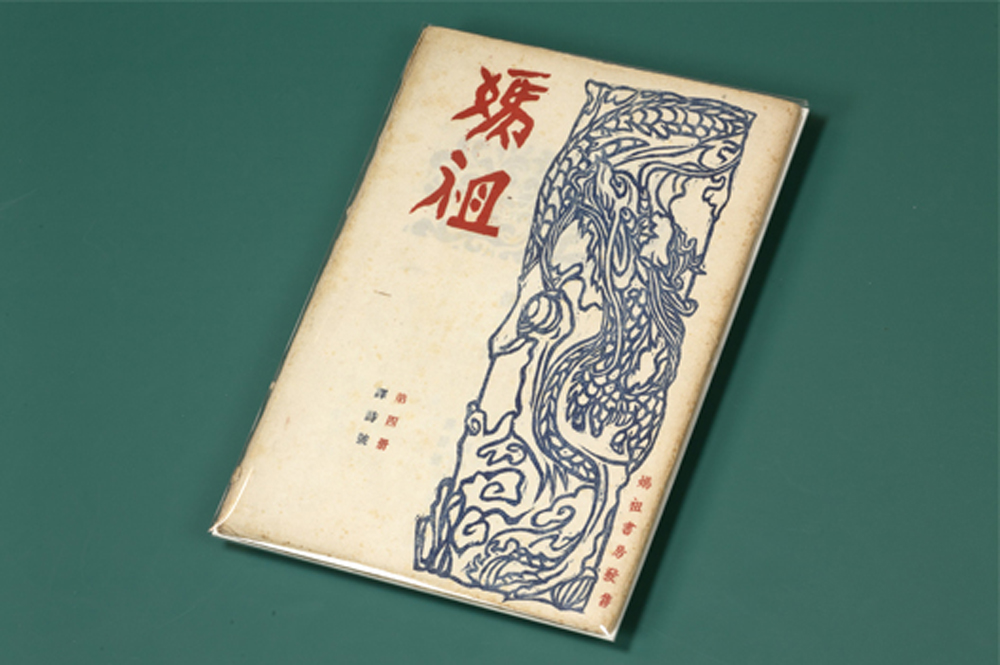
Mitsuru Nishikawa (1908-1999) was from Wakamatsu (Aizuwakamatsu), Japan. He came to Taiwan with his father in 1910, where he lived, studied and was active in various literature-related events and activities. Matsu, published by Misuru’s Matsu Publishing House (founded 1934), regularly featured the lithographic art of fellow Japanese Tateishi Tetsuomi and Kanda Yataro on its cover. Matsu was published until 1938.
Maso Shobō (Matsu Publishing House), Taihoku (Taipei), 1937; journal; provided by NMTL collection
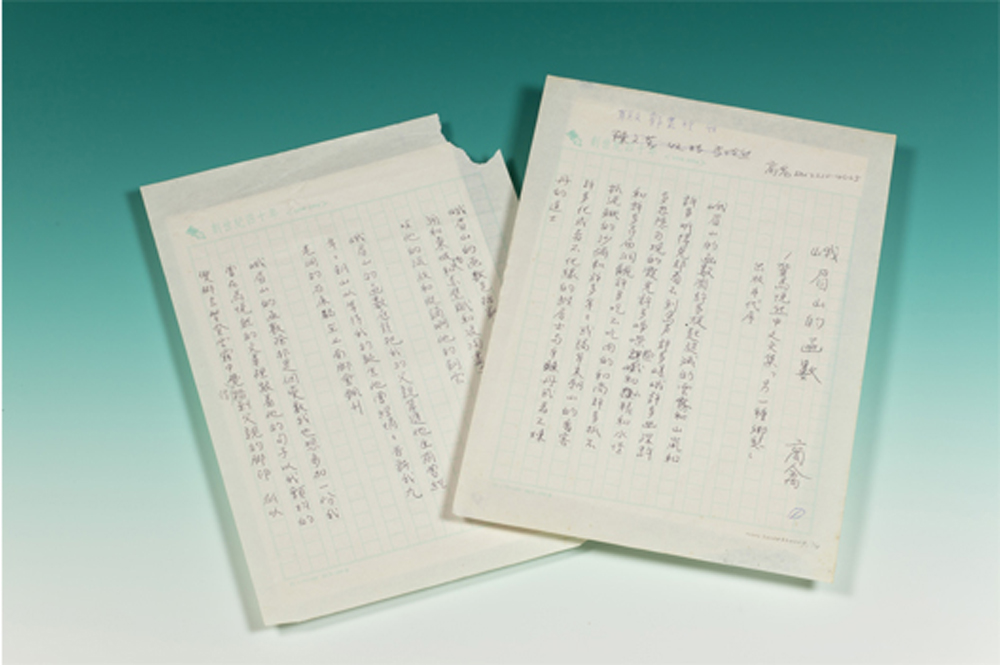
Shang Ch’in, aka Luo Hsien-yen (1930-2010) was a native of Gong County in Sichuan Province. Shang arrived in Taiwan with the ROC military in 1950. He wrote original poetry, was a member of the Epoch Poetry Society and influenced the development and shape of Taiwan’s modernist poetry movement. “The Functional Nature of E-Mei Mountain” was written as a preface for Swedish linguist Nils Göran David Malmqvist’s Another Nostalgia. Impressed by his poems, Malmqvist had earlier translated and published Shang’s poetic works into English and Swedish, which introduced Shang Ch’in’s works to a worldwide audience.
manuscript; provided by NMTL

Chu Hsi-ning (1927-1998), a native of Linqu in Shandong Province, arrived in Taiwan in 1949. The Family of Tai-Ping Hwa was Chu’s last work. Set in the late Qing Dynasty, this weighty and epic novel narrates an 18-year span of time to weave the story of an average family forced to deal with the whirlwind changes sweeping their nation and personal lives.
1980s; manuscript; donated by Chu Tien-wen
Literature helps infuse landscapes with stories and purpose. Literature not only brings to life its narrative settings, it gives poetic meaning to story details and embraces the author’s inner essence.
Authors construct their historical and personal perspective through interaction with different landscapes and spaces. They describe the nostalgic and emotional relationships individuals share with physical space, the way they interact with such space, and their practical hopes and desires. Author narratives deftly weave lives into the fabric of Taiwan’s nurturing, sustaining land.
The “heaven and earth” of the author is not limited to the author’s inner world, but is the realm of poetry as well. In describing changes to village life in the face of industrialization, the distinctive landscape and voices of Taiwan’s outlying island, and the disparate cultural histories of East and West, authors seek to both recall spatial memories and paint expectations for the future. More than simply the exploring an author’s inner being, literary depictions of space embrace life’s expectations and hopes.
Authors from towns along Taiwan’s rivers or on the sea enjoy yet another rich well of literary inspiration. Like forests and hills engulfed by urbanity, many today are caught between modern and traditional ways of life, caught in the din and glimmer of the big city. The life stories of many, however, continue to be written on Taiwan’s chronically poor western shoreline and the remote and mountainous East Coast. Chilly winds and nasty weather perennially plague fishing villages. The harsh existence here has served as inspiration to many authors. Yushan, Taiwan’s highest mountain, is not only a place of worship for Taiwan’s indigenous peoples, it is the source of their myths and ancestral stories. Different ethnic groups describe the world of literature in their own tongues. Authors embark on voyages of inner discovery from their own unique cultural perspectives.
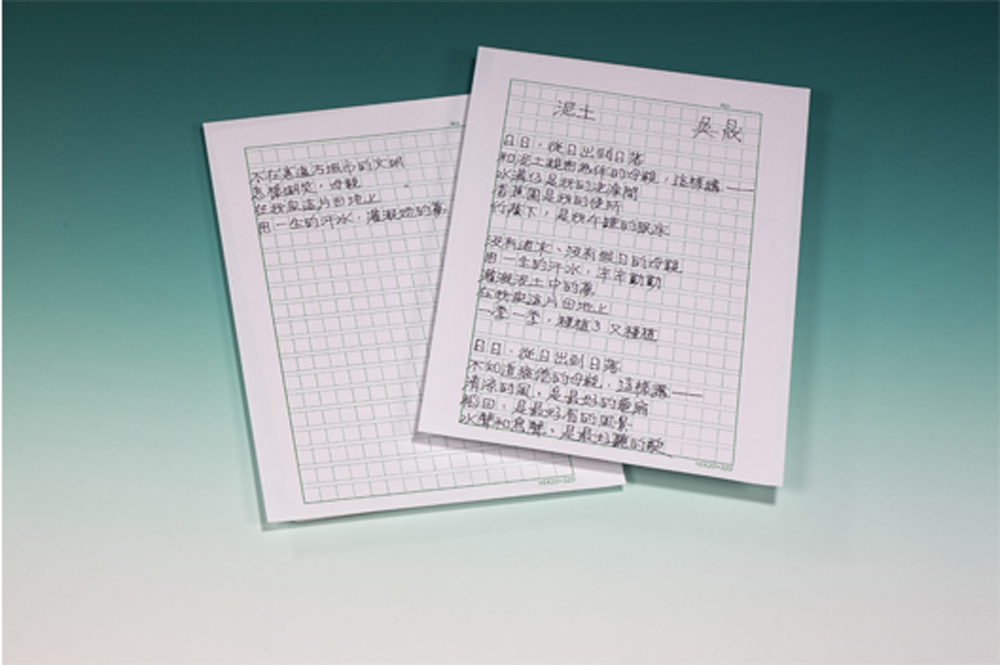
Wu Sheng (1944 - ), aka Wu Sheng-hsiung, is a native of Changhua in Central Taiwan. His mainly poetic works reflect his personal observations on life and philosophical outlook firmly rooted in his beloved Taiwan. His works have been set to music and released by popular music artists Lo Ta-yu and Wu Zulin.
clean manuscript; provided by Wu Sheng
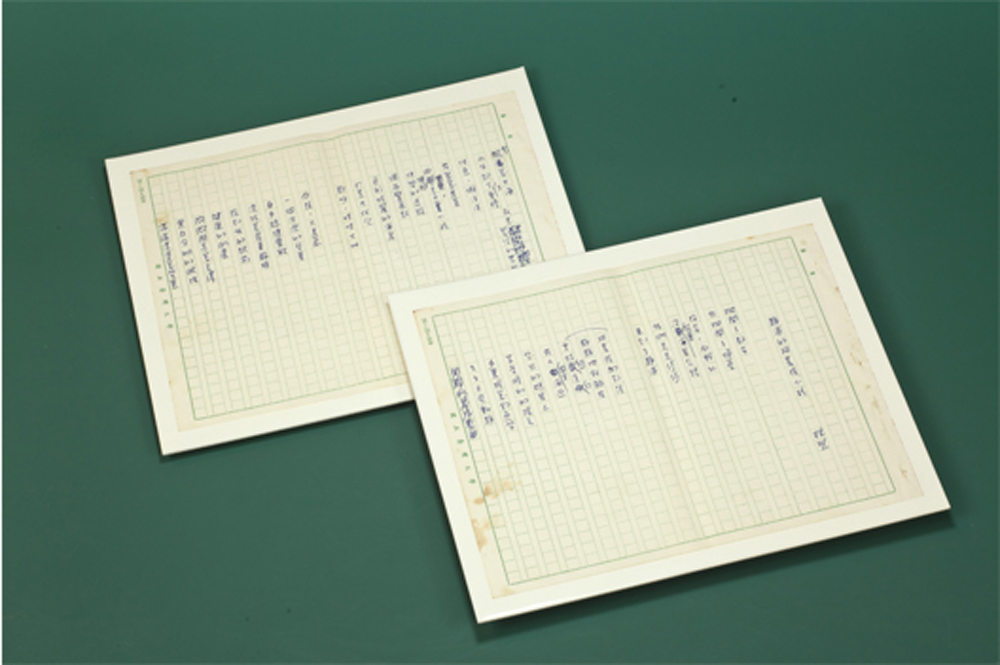
Lin Fan (1950 - ), aka Lin Jui-ming, is a native of Tainan City, Taiwan. Lin is a history scholar and creative writer with a particular enthusiasm for poetry. Orchid Island of the Yami was published in 1984 at a time when indigenous literature was just starting to earn attention. Lin’s realist style produced an original work rich in symbolic imagery that painted a vibrant portrait of life on remote Orchid Island off Taiwan’s southeast coast in the Pacific.
manuscript, 1980s; provided by Lin Jui-ming
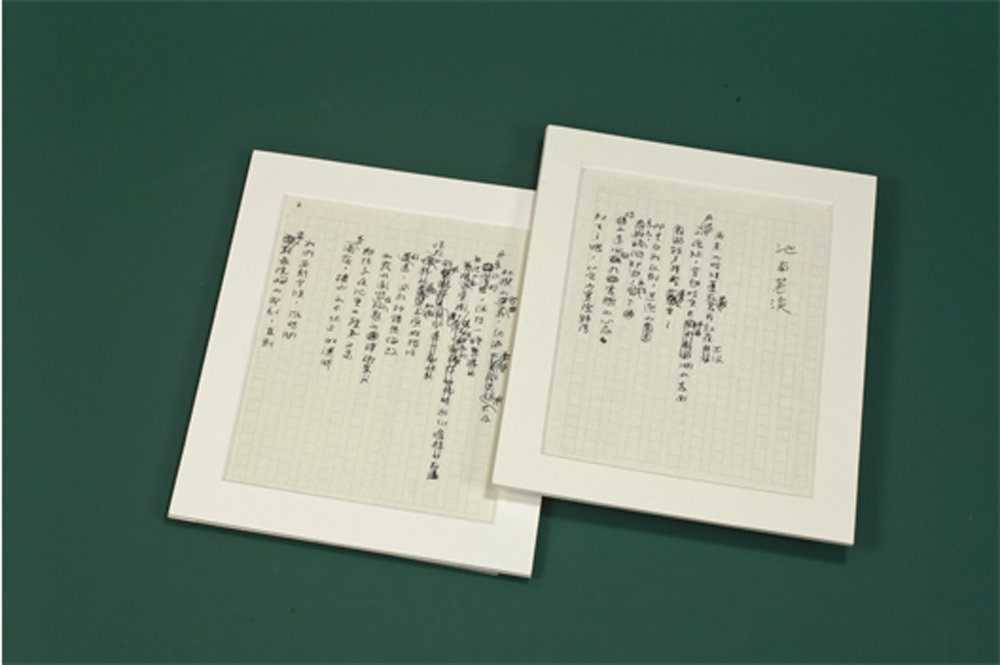
Yang Mu (1940 - ), aka Wang Ching-hsien, is a native of Hualien County in East Taiwan. His poem “Lau Creek Chih-Nan Village” was included in the anthology, Mealybugs. Yang tries in this work to transform poetry into a work of music. The banks of Lau Creek near Chih-Nan Village teem with life that burst forth into unrehearsed song, which, when interwoven with the natural rustle of surrounding nature, invites the reader to become absorbed into the work on both a poetic and musical plane.
manuscript, 1980s; provided by Yang Mu
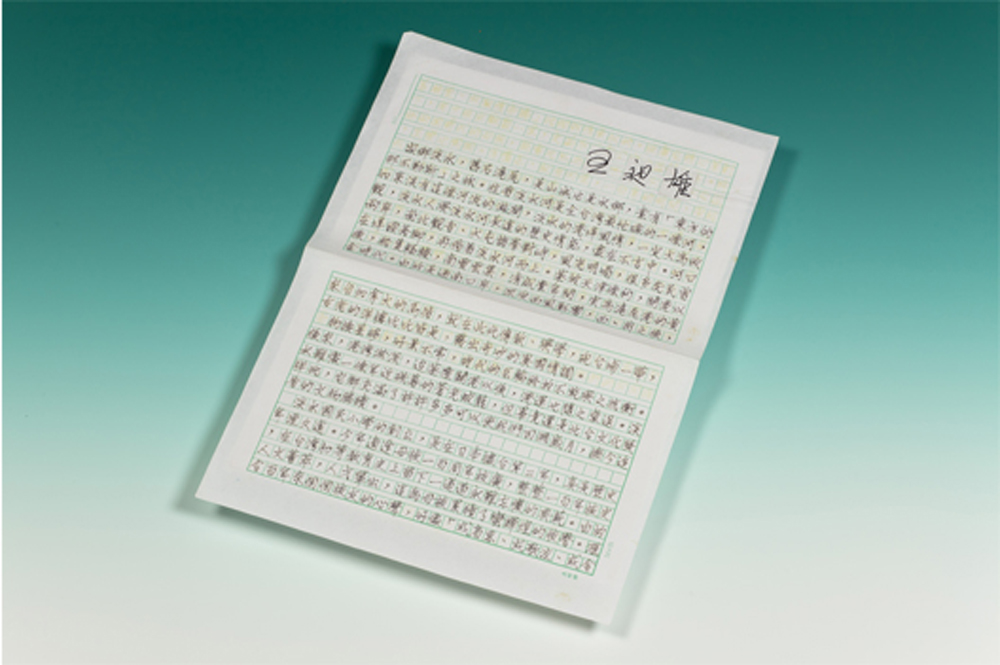
Wang Chang-hsiung (1916-2000), aka Wang Jung-sheng, is a Taipei City native. This 1939 manuscript was Wang’s first submission to the Taiwan Shinminpo (Taiwan New People’s Post). After 1945, it was translated into Chinese and serialized in the Taiwan Shin Wen Daily. The Tamsui’s Rippling Waters vividly describes life on Taiwan and conveys a comforting, homey feel.
manuscript; donated by the family of Wang Chang-hsiung
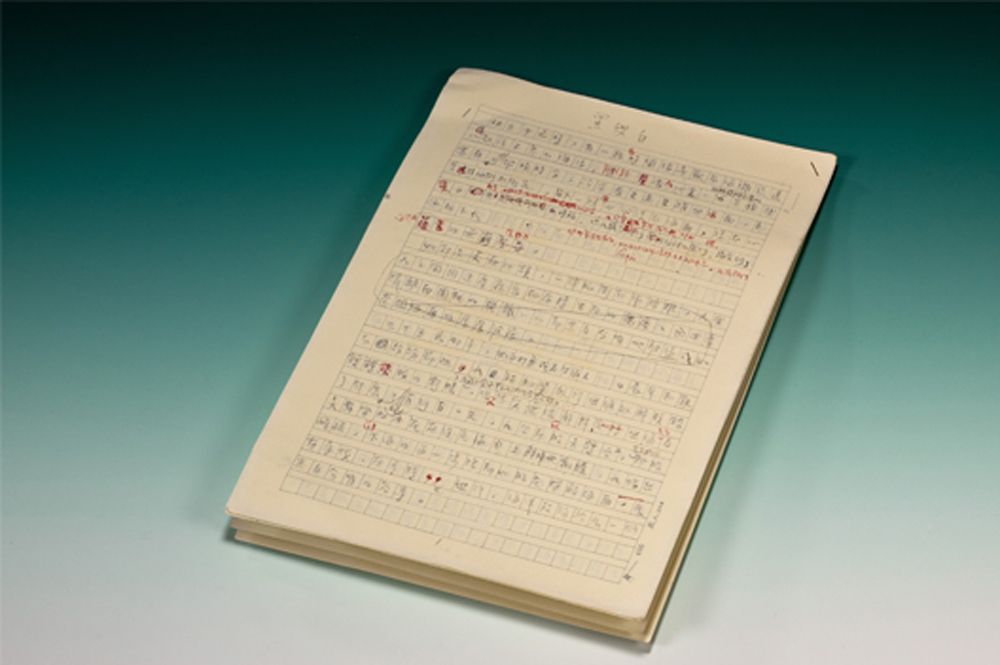
Liao Hung-chi (1957 - ) is a native of Hualien County, East Taiwan, and long-time ocean conservation advocate and educator. Black and White describes the author’s encounters with orca whales while working on Hualien-based whale conservation programs. Black and white, the orca’s two colors, are used as a metaphor for Liao’s direct and unceremonious character.
manuscript; provided by Liao Hung-chi
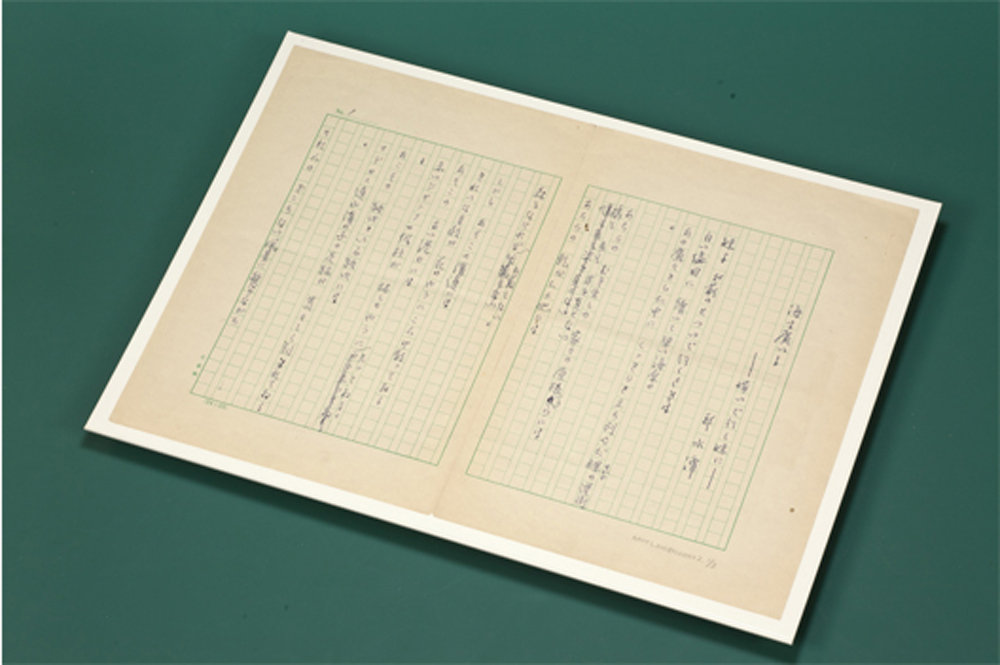
Kuo Shui-tan (1907-1995) was a Japanese Colonial Period author from the Chiali Salt Flats in Tainan County. His modern poem ‘O Sea, So Expansive, later translated from Japanese into Chinese, is a touching introspective on the cacophony of emotions at play in sending a daughter off to marriage set against the background of Tainan’s coastal salt flats. Kuo’s work is both stark and sentimental.
1930s; manuscript; donated by Kuo Sheng-ping

The languages, mores and other cultural manifestations of different ethnic groups come naturally into conflict at different points and places in time. Those forced into sharing the same land inevitably learn, however gradually, to coexist and get along. Different time periods engender different ideas. Initial violent conflict evolves into more complex and subtle relationships for different ethnic groups shoehorned into the same living space. Through conflict and cooperation, groups learn how to interact. Differences become tolerated and then accepted. In listening to the other’s life experiences, a shared historical dialogue begins, which leads to coexistence and the blooming of a multi-ethnic and multi-cultural society. Taiwan’s rich historical experience has engendered a profound literary tradition grounded in disparate cultural and historical experiences.
This section highlights the process of competition and accommodation that has nurtured inter-ethnic conflict and cooperation. Different types of writing written in different periods reveal differences in author emphasis. Creations of literature using various languages and forms have created solid foundations for a cooperative and resplendent literary garden. This section also examines contemporary literary journals and societies to highlight the incessant search of Taiwan’s authors to answer the questions of how best to create a cohesive society and how to go about establishing prosperity for all of Taiwan’s various ethnic groups. Countless literary luminaries have played unquestionably important roles in realizing a rich multiethnic literary inner being.
Interethnic competition fed clashes and conflict that was broken only occasionally by alliances to oppose threats from abroad. This long and difficult road sowed the seeds destined to grow and create the foundations that all groups would accept as uniquely “Taiwan.”
Internecine conflict, resistance to government oppression, anti-colonialism and battles for linguistic rights have all left their mark on Taiwan history. But through the conflict, Taiwan’s different peoples have come to know one another and gradually learn to respect and even appreciate one another’s differences. Complicated relationships running the gamut between bitter conflict and active cooperation forms one of Taiwan literature’s most indelible themes. Raising the light of reason, authors delve into the meaning of interethnic cooperation. In expounding on the struggle for existence, authors spark cultural awareness, debate literary form, discuss future possibilities and guide people out from under conflict’s shadow. Authors and their works create the framework for coexistence and cooperation and herald the arrival of a distinct Taiwan culture.
Armed conflict was a part of life on Taiwan during the early decades of settlement. Individuals, clans and ethnic groups were locked in life and death struggles to squeeze prosperity and hope from their island wilderness. The arrival of new competitor groups, however, sometimes brought former enemies into new alliances out of a need to “protect the homeland.” Dominant groups also occasionally split into squabbling factions, expanding local conflicts and destroying former peaceful coexistence. Authors living through such times took it upon themselves to pen their observances and thoughts on contemporary affairs.
Japanese colonial authorities began their rule forcefully. Military rule was gradually replaced by a more enlightened and modern authoritarian rule that suppressed and reoriented the island’s social and political landscape. Responding to oppression, Taiwanese poured their energies into various societies and cultural activities. Calls for reform necessitated a grassroots movement that welcomed cooperation from all those disenfranchised and sidelined by colonial rule. Every period in history has its authors willing to heed the clarion call to action and invest their lives for the social good. They witness oppression and resistance in their writings and participate themselves in social activism.
The frequent appearance of two or more languages in a single work is a hallmark feature of Taiwan literature. While the promotion of a common language for the island at various times in history has certainly reduced problems inherent in miscommunication and misunderstandings, such policies have nonetheless created a system of linguistic apartheid. Those writing in the “common” language had a much better chance of getting their literature read and messages heard. The writing of perceptive and talented authors can help satiate the curiosity of different groups about one another, overcome language differences and open pathways to acceptance and understanding.

Cheng Yung-hsi (1788-1858) was a native of Zhuqian, modern-day Zhubei in Hsinchu County. Cheng wrote “Reconciliationism” in 1853 in response to the Zhang-Quan Clan Wars and followed up by traveling personally amongst the affected villages promoting a resolution of tensions. He longed to create peace in a land wracked by ethnic and intra-ethnic feuding and violence.
Taiwan Bank Press, Taipei, 1987; book; donated by Hsu Ping-ting
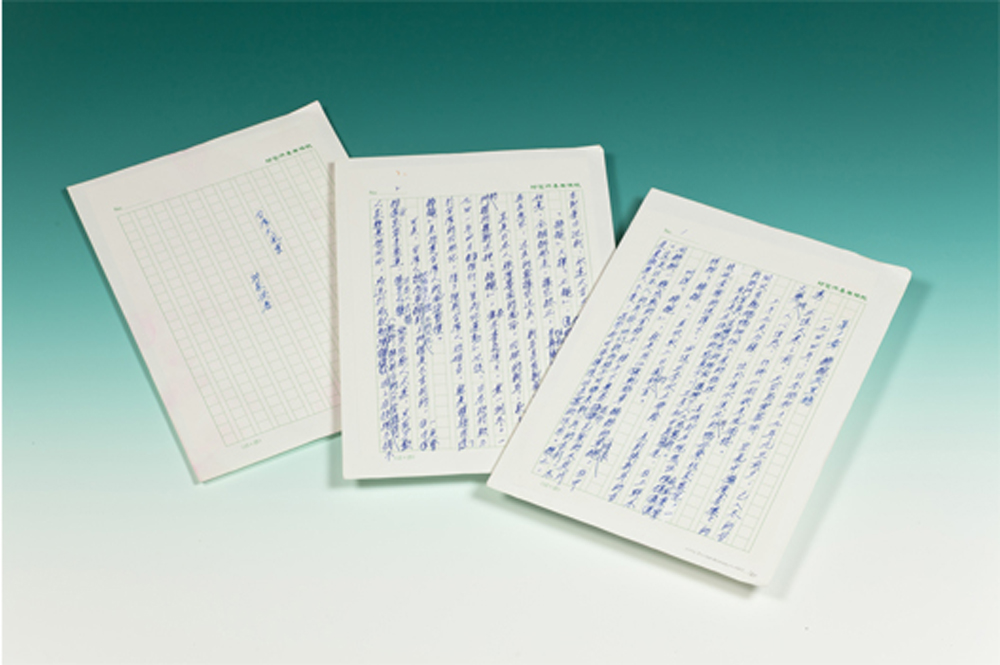
Chiu Chia-hung (1933 - ) is a Taichung, Taiwan native. Chiu published the 2.3 million (Chinese)-word Winds of Change over Taiwan at age 70 in 2002. In 6 chapters with names such as “The Calamity of the Second World War”, “Empire Lost” and “228 Terror”, he narrated the ebb and flow of modern Taiwan history and the life and times of its citizenry.
manuscript; donated by Chiu Chia-hung
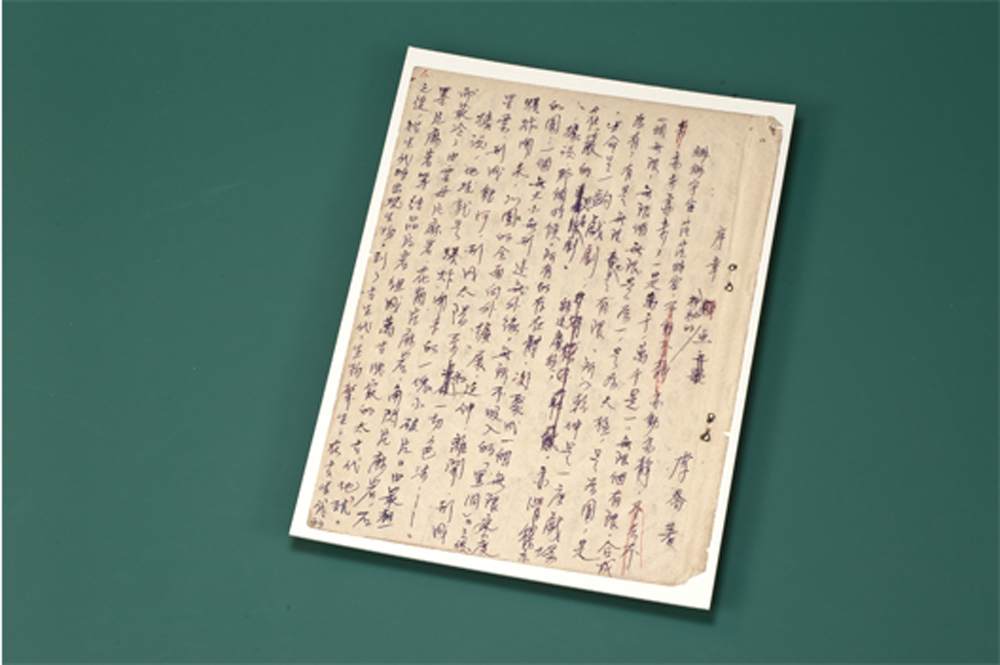
Lee Chiao (1934 - ), aka Lee Nung-chi, is a native of Miaoli, Taiwan. His Winter Night Trilogy was the literary package for his three works, Winter Night, The Lone Lamp and Deserted Village. Winter Night is a tale of the land that describes a century of struggle to tame the wilderness and make it productive. Through conflict and disaster, the protagonists’ determination to hold firm to roots dug deep into Taiwan’s soil creates a tale of bitter survival.
1979; manuscript; provided by Lee Chiao
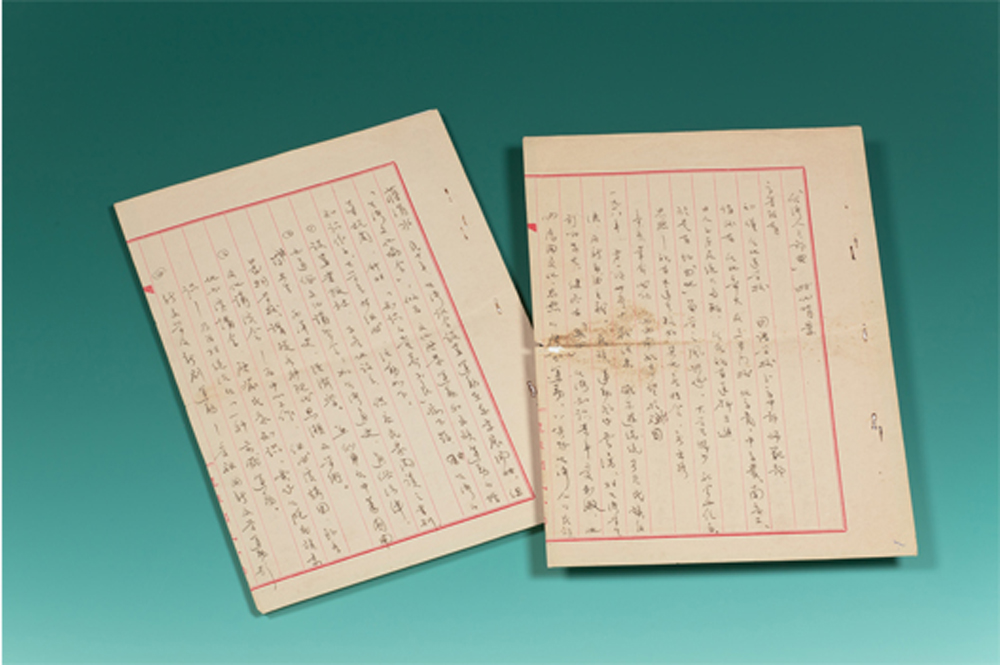
Chung Chao-cheng (1925 - ) is a modern author from Longtan in Taoyuan County, Taiwan. Chung released the first installment to his Taiwanese trilogy in 1967 when he published Degradation. It was followed in turn by Dark Sea Journey and Song of Chatian Mountain. He couches his stories in the true-life experiences of Chinese Hakka. Focusing in on island-wide developments and social trends, Chung takes a sharp, clinical look at the conflicts he attributes to Taiwan’s long period of colonization.
1925; manuscript; donated by Chung Chao-cheng
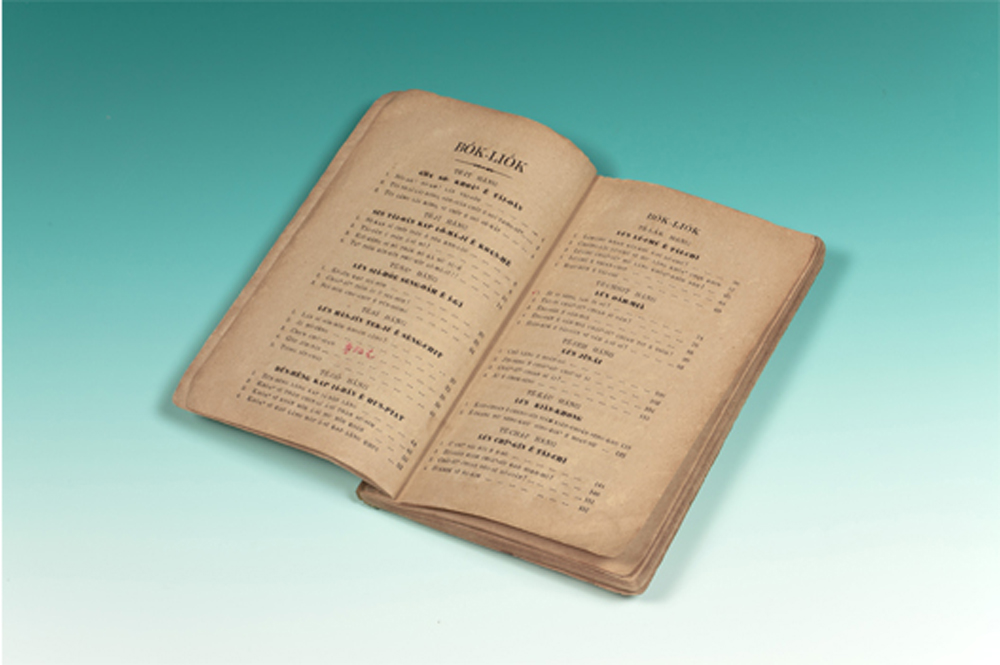
Tsai Pei-huo (1889-1983) was an author from Beidou in Yunlin County, Taiwan. Chap-Hang Koan-Kian, published in 1925 and written in vernacular prose, states opinions and ideas on ten issues the author perceived as central to the health and growth of contemporary Taiwan culture. This work was written as a social education piece to inspire and motivate his fellow Taiwanese.
1925; book (reprint); NMTL collection
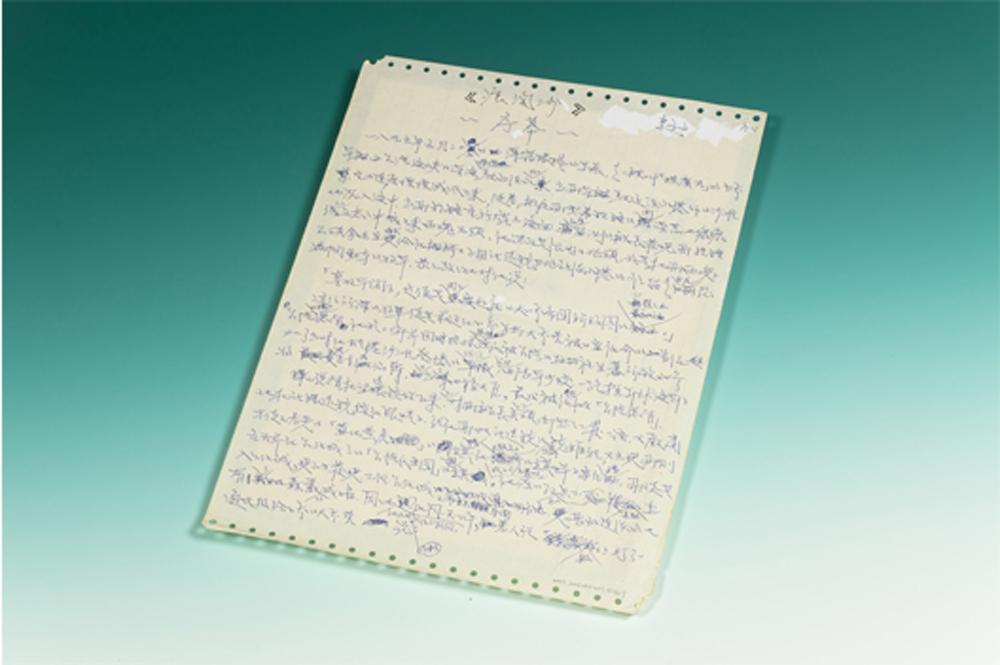
Tung Fang-po (1938 - ) is from Taipei City, Taiwan. Tung finished his 11-year opus, Wave-Washed Sand in 1991. The story transgresses linguistic, cultural, national and ethnic boundaries in its examination of the problems of three families. Caught up in an emotional storm, the story steers a course toward coming to terms with fundamental human compassion.
1980s; manuscript; donated by Tung Fang-po
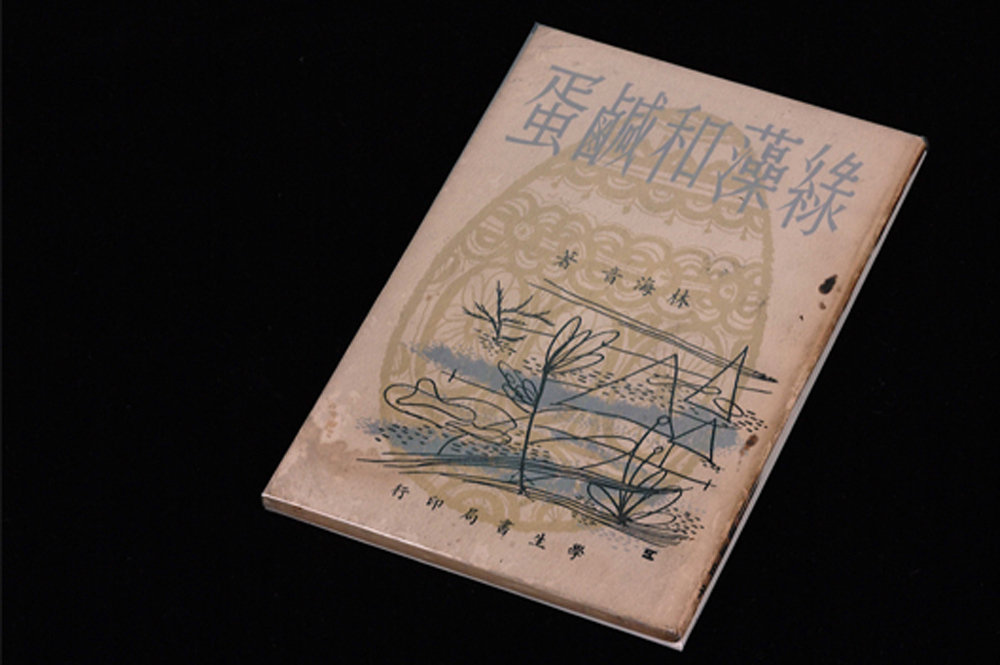
Lin Hai-yin (1918-2001) was an author from Toufen Township in Miaoli County, Taiwan. “Crab Shell Cakes” describes the meeting over food of a Mainland Chinese boy and Taiwanese girl during the early Retrocession Period. The girl finally puts to rest the boy’s constant bickering over their different backgrounds, and they find common ground in a shared language and anti-communist zeitgeist. Having found himself an unexpected resident, the boy mulls over the likelihood of Taiwan becoming his permanent home.
1982; Literature Press, Taipei; book; donated by Hsia Tsu-chuo
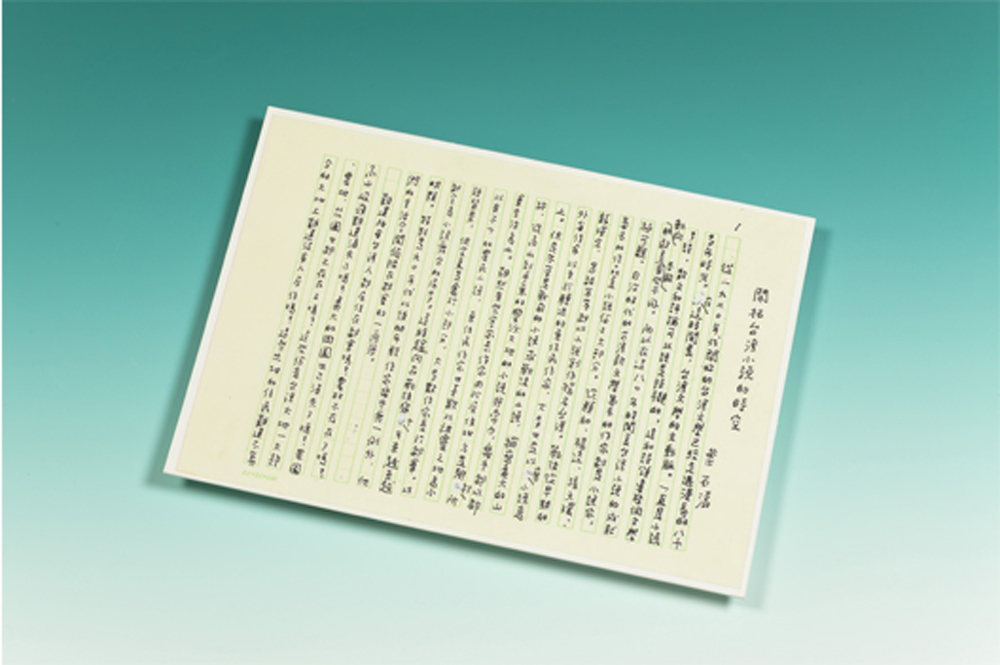
Yeh Shih-shou (1925-2008) was an author from Tainan, Taiwan. Yeh wrote Expanding Horizons for Taiwanese Novels as his general narrative on the Taiwan literature’s development since the 1920s. He urged a much grander vision for the novel genre in Taiwan, writing that only by addressing the whole spectrum of ethnic and clan groups on the island could the Taiwan novel reach its fullest and richest potential.
1990s; manuscript; donated by Yeh Shih-shou
The springboard of language can foster mutual understanding and respect. Literature helps confirm self-identity through self-expression. The subsequent profusion of literary activities has a strong and positive role to play in dissipating the curse of internecine competition and conflict. Starting from the perspective of “my group,” authors unveil the diverse richness inherent in the inner being and invest themselves in fostering mutually supportive intergroup relationships to nurture a strong and healthy literary tree able to bear fruit for generations to come. Authors of different ethnic backgrounds join as one to nourish and expand the literary profession. Bridging old and new and motivated for the common good, authors engage in active dialogue that inter-pollinates and introduces diverse opinions and perspectives to set the literature of “us” on a solid footing with positive momentum into a future of benefit to all.
Since the 1920s, literary historians have led a concerted effort to collect and publish folk songs and stories from around Taiwan. From the 1980s, democratization, grassroots promotion of traditional folk culture, and tribe efforts to revive Malayo-Polynesian language use led to the creation of myriad culture-oriented groups, magazines and new literary honors. A common thread throughout has been calls for a restoration of and respect for Taiwan’s distinctive ethnic and cultural traditions. Movements are rooted in folk ways and traditions, relate local histories and encourage the telling of life stories in local languages.
Facing a society of multiple ethnic polarities, authors can draw on familiar life experiences, describe their own search for family roots, and observe the complex multi-ethnic tapestry in their own DNA to uncover origins and understand differences. Authors ultimately reconstruct the “self” and their spatial existence to foster life and plant the seeds of enlightened reflection on the threads of history that bind us all together that will sprout and flourish for generations to come.
forbid such. They open their hearts without prejudice to all Taiwan authors who have come before to create a forum for discussion and creativity. Their goal is cooperation. During difficult times, visionary authors step to the fore to send cool, pure water to “our” shared literary garden in hopes it will bloom again to take the literary arts to new and greater heights.
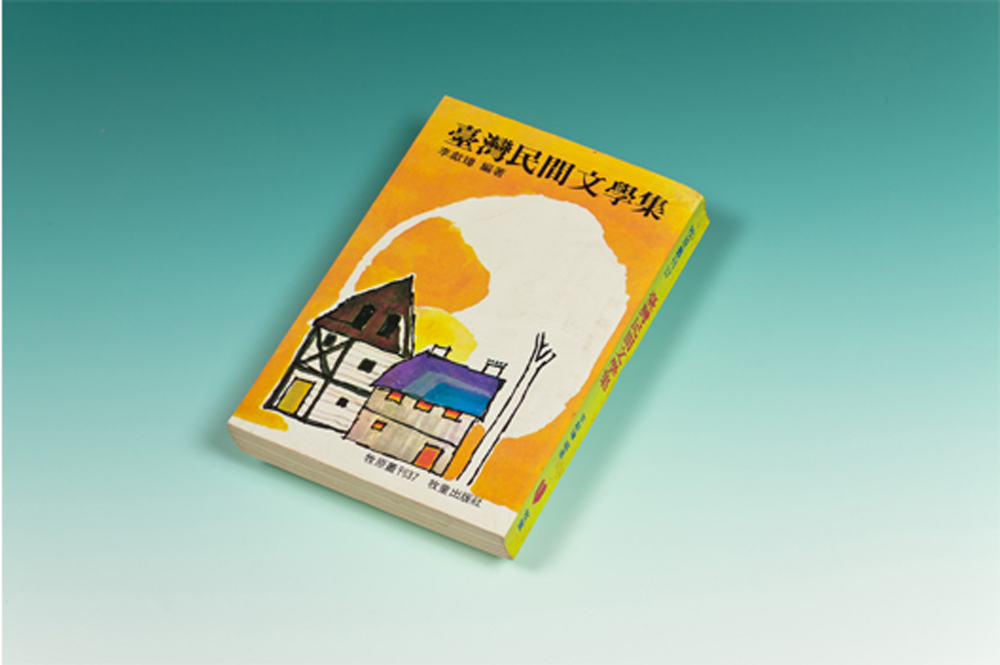
Lee Hsien-chang (1904-1999) was an author from Daxi in Taoyuan County, Taiwan. Lee spent part of the 1930s recording and writing down folk stories and songs from around the island. He compiled nearly one thousand songs and 22 stories into his Collection. He continued his research, becoming a strong advocate for valuing one’s own literary heritage over the empty ogling of foreign authors and literary traditions.
1936; book; donated by the family of Wu Shou-li
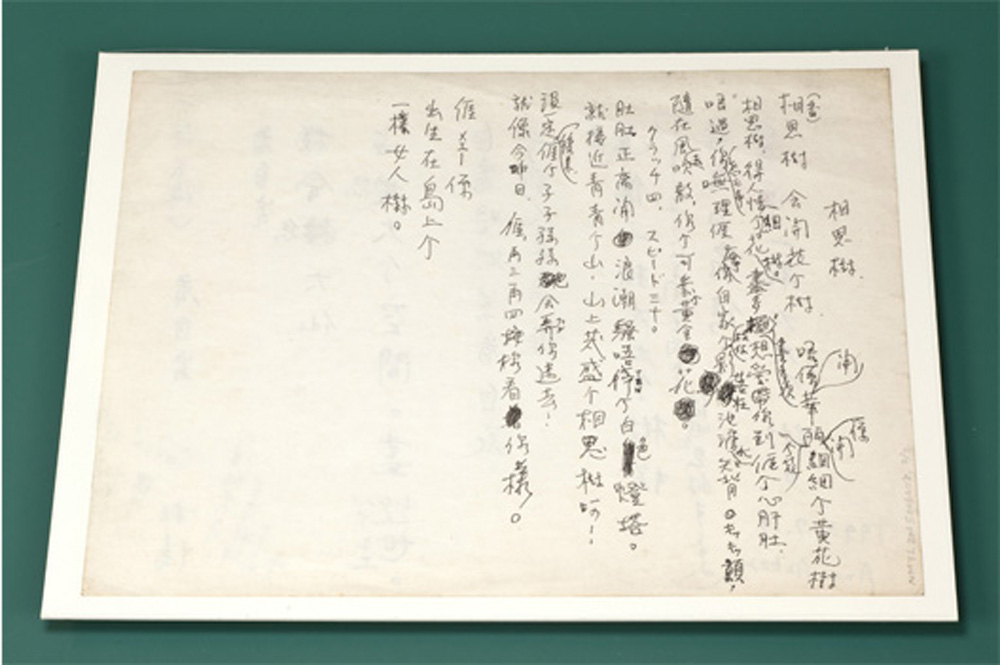
Tu-Pan Fang-ko (1927 - ) is an author from Xinpu in Hsinchu County, Taiwan. This manuscript of her Hakkanese poem “The Acacia Tree” eloquently illustrates the poet’s creative process. An accomplished writer of Japanese prose prior to 1945, Tu-Pan experienced a spiritual self-awakening in her native Hakkanese (a dialect of Chinese) after the Second World War, and she reoriented her creative output into this new medium. The rustic scenes of traditional Taiwan described in “The Acacia Tree” are metaphors for aspects of the author herself. A bridge between two linguistic ages, Tu-Pan uses poetry to pass island culture forward to new generations.
1968; manuscript; donated by Tu-Pan Fang-ko

Walis Naqang (1967 - ) is an ethnic Atayal from Heping in Taichung County, Taiwan. Walis completed Atayal Footprints during the 1990s in side-by-side Atayal (romanized script) and Chinese. The novel narrates a moving story that highlights the vital spirit of the Atayal people.
1990s; manuscript; donated by Walis Naqang
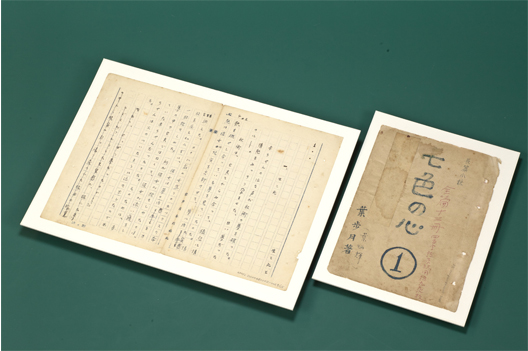
Yeh Pu-yueh (1907-1968), aka Yeh Ping-hui), was an author from Taipei City, Taiwan. He completed this epic novel in the 1960s. The Seven-Colored Heart follows the story of a Taiwanese family through three generations, highlighting their myriad and complicated cultural conflicts and the bittersweet rise of the main protagonist to social success and status.
1960s; manuscript; donated by the family of Yeh Pu-yueh
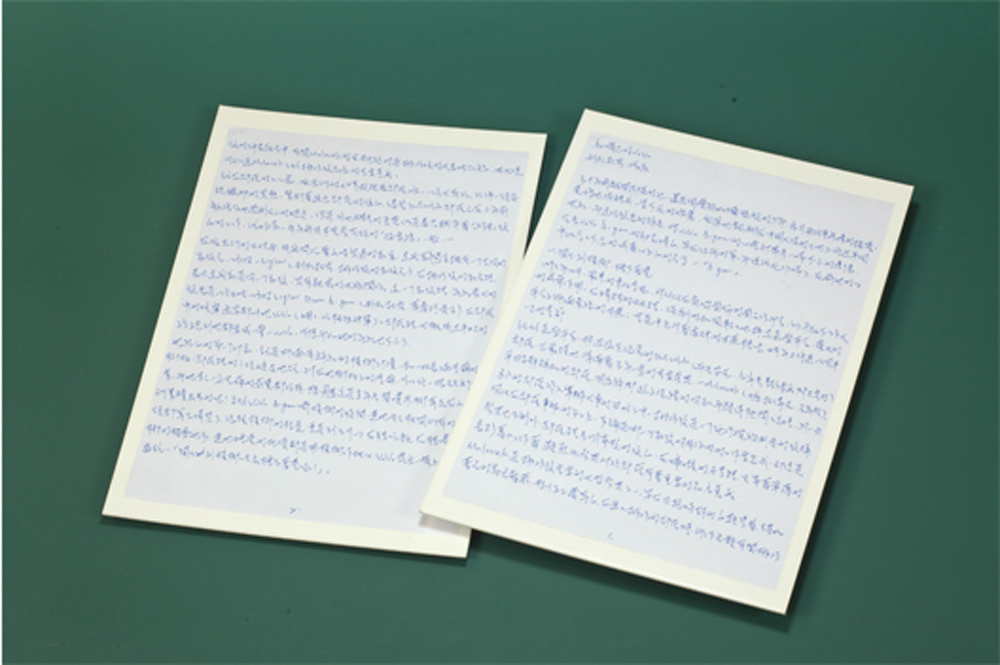
A-wu Liglave (1969 - ) is an ethnic Paiwan from Pingtung County in southern Taiwan. VuVu is a Paiwan term of affection for the elder women in the community. This book narrates stories of life that highlight the Paiwan love of life and Paiwan determination to remain a tightly knit community.
1990s; manuscript; provided by Liglave A-wu

Chen Yeh (1959-2011), aka Chen Chun-hsiu, was a native of Tainan, Taiwan. River of Mud narrates the three-generation saga of the Lin family of Tainan. From the Japanese Colonial Period through to the postwar era, the book’s protagonists experience the tumultuous flow of history and several of Taiwan’s seminal historic turning points. Published in 1989 just as Taiwan finished disassembling Martial Law restrictions, it was one of the first works of literature to directly address the so-called February 28th (228) Incident and the ensuing years of White Terror.
1989; Independence Evening Post, Taipei; book; NMTL collection

Launched in 1947, the Shin Sheng Daily News’ “Bridge” supplement carried these opening remarks by its chief editor Ko Lei. Ko wrote, “‘Bridge’ symbolizes a passing of the torch from old to new, a transformation from the exotic into familiar friend. It is a new horizon of fertile potential. ‘Bridge’ symbolizes the opening of a new era.” The supplement was intended to bridge local literature into the new postwar era, and stressed conciliation and cooperation in the work ahead.
The Bridge Supplement, Shin Sheng Daily News; August 1st, 1947

Bungei Taiwan published its first issue in 1940 under the editorship of Mitsuru Nishikawa. With the goal of growing to become a “focal pillar of Taiwan culture,” the journal attracted a sweeping array of short stories, poems, theatrical scripts, haikus and tankas from both Taiwanese and Japanese authors. Later issues devoted increasing space to literature related to conflict and the ongoing Pacific War.
1940, first issue; journal; donated by Long Ying-tsung
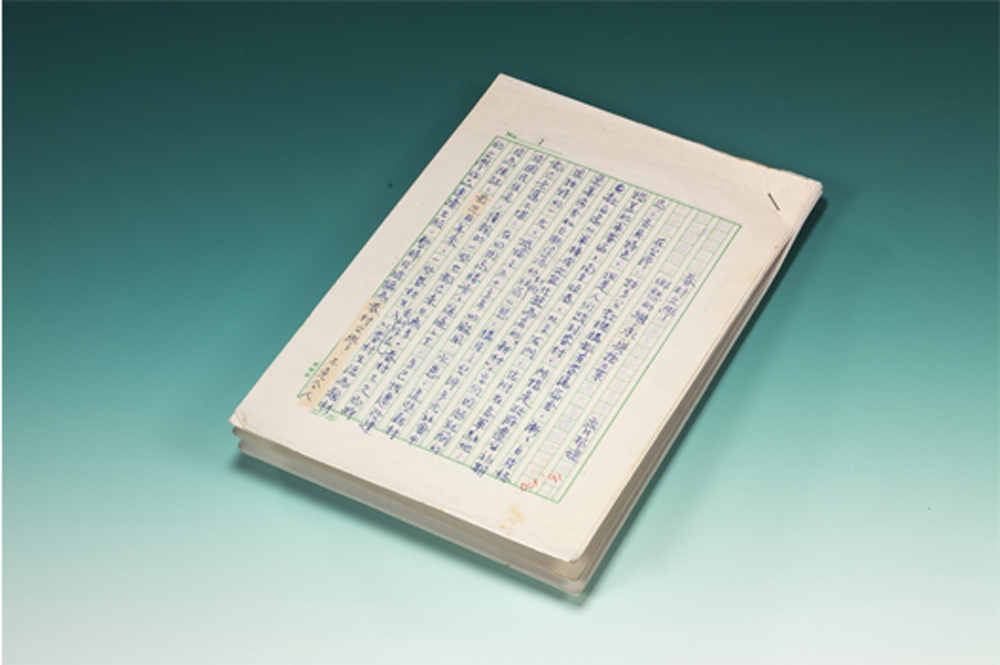
Chi Pang-yuan (1924 - ) is an author from Tieling in Mainland China’s Liaoning Province. This original manuscript is one chapter from Chi’s work, Raging River. From the 1970s, the author began devoting her time to translating Chinese literature into English, opening Taiwan literature to the world. Her efforts have been crucial to developing and growing Taiwan’s increasingly rich literary dialogue with other nations and cultures.
chapter 10; manuscript; provided by Chi Pang-yuan

The many social and cultural movements that have swept through Taiwan since the beginning of the 20th century have radically transformed society. In such facets as literary perspectives on diversity and life, views on literary works, and the development of gender awareness and sensitivity, it is apparent that when facing new perspectives, Taiwan is no longer a passive receptor. Increasingly Taiwan absorbs and shapes outside influences into something uniquely fit to local conditions.
Taiwan’s central geographic location has also shaped its literary perspectives. Taiwan has shared an intimate connection with the outside world from its earliest days. Strong publishing and translation sectors ensure that Taiwan literature is no longer an internal dialogue, but rather an interactive experience feeding and fed by literary streams across the planet. Driven by high technology, media worldwide is focused on feeding public hunger for new and diverse content. The digitalization of literature is one way in which readers can create, opine and interact without leaving their computer screen. Computers and the Internet can set everyone’s literary spirit free and take dialogue to the next new and exciting level.
This section examines various current trends as well as diverse writing formats and literary forms to encourage all to read and enjoy literary works that reflect their personality and background, experience the enticements of literary genres reflecting different gender perspectives, and enter into the essence of world literature through one’s personal local literary experience.
Change is ceaseless. Authors writing at various periods capture for us the dramatic changes in modern Taiwan life. How we experience our current world reflects our unique take on life itself.
The contemporary social and literary zeitgeist nourishes author creativity and innovation. Our expanding urban landscape has brought convenience to its residents and inspired authors to peer into and reflect upon its deeper impact and meaning. Literature is power. In writings on rural life and those living away from major population centers, we hear the different voices of people living off the land with different perspectives and value systems. In writings on nature, we listen in on dialogues between the natural and modern world and between man and the land. They are symphonic scores that plumb the depths and true meaning of relationships.
A modern building boom in the 1920s modernized Taiwan’s cityscapes and transformed daily life for the average citizen. Literature of the time reflected contemporary dissonance and adjustment to the introduction of modern values and mores already underway. Western influences on contemporary society and literature increased from the 1950s onward. Post-1949 Taiwan saw the founding of many new literary societies, the creation of new literary print and broadcast channels, the organization of literary exchange programs and the incessant exploration and development of new forms and techniques of literary expression.
issues worth exploring. Taiwan authors again revealed themselves up to the task, focusing keen minds and perceptive eyes to reveal the bigger picture of modernity for readers.
Urban culture in Taiwan was in its infancy at the dawn of the 20th century. A century later, the “Urban Literature” movement infused the perspective on change held by earlier generation authors into thoughts on the urban culture to come in the 21st century. Authors brought their own individual perspectives to bear on such important issues as the true meaning of civilization and the alienation of the individual.
My Village: Many Taiwanese were born and grew up in mining, forestry and fishing communities.
Nativist literature held unchallenged sway between the 1920s and 1970s. Those writing in the nativist genre tilled the social landscape with their articulate, well chosen words. Against the backdrop of the Taiwan experience, nativist works were beacons of inspiration to the island’s working class. Authors invested their emotional energies in understanding and empathizing with the life of the farmer, forester, fisherman, miner and factory laborer. Across the decades and through various stages of economic development, they wrote on the intrinsic value of life and celebrated the everyday accomplishments of people from many different walks of life.
“Economic miracle” was regularly used to describe Taiwan from the 1980s onward. It was a miracle, however, that came at a high price in industrial pollution, land development and environmental degradation.
Taiwan authors again pointed their pens in protest, using literature to give a voice to the cries of the island’s withering natural heritage, expound a more accommodating philosophy of life, or examine the issues underlying shifting boundaries between civilization and nature. Authors raised discussions of nature beyond flora, fauna and natural scenery to a study of the very essence of human existence and the vital importance of collective survival.

Formosa (フォルモサ) released its first issue in 1933, publishing three volumes in total. The journal was the creation of Taiwanese student members of the Tokyo-based Taiwan Geijutsu Kenkyukai (Taiwan Art Circle), founded by Wang Pai-yuan (Ou Haku-en), Wu Kuen-Hwang and Wu Yong-fu. Su Wei-hsiung served as its chief editor. Content focused on articles and literary works inspired by nativist and socialist ideals.
1933; journal; donated by Huang Teh-shih

Literary Review began publishing in 1956 with Hsia Chi-an as chief editor. In an era of virulent anti-communist rhetoric, authors Hsia Chi-an, Wu Lu-chin and Lin I-liang created Literary Review as a springboard for open thought and free expression.
1956; journal; donated by Chang Mo
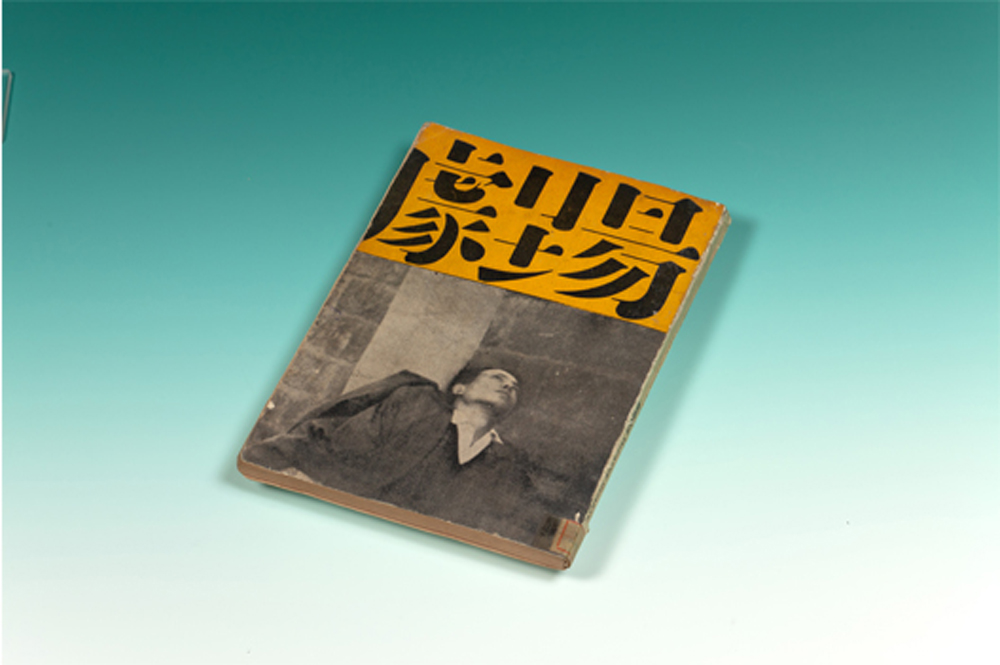
Theater released a total of nine volumes since releasing its first issue in 1965. The journal brought avant-garde and modernist art trends to Martial Law-era Taiwan, looking to trounce stifling conformity with creativity. Theater published original contributions from domestic literary authors, screenwriters and theater playwrights and important foreign theatrical and literary works in translation.
1965; journal; donated by Cheng Tsai-ching
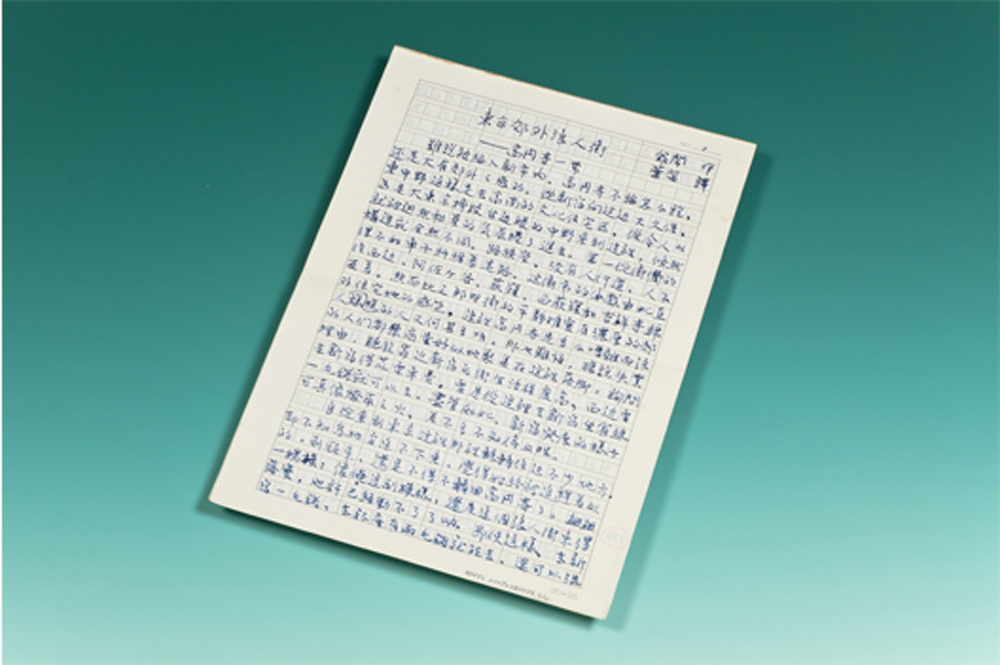
Ong Nao (1908 – unknown) was a native of Shetou in Changhua County, Taiwan. After arriving in Tokyo in 1934 as a student, he moved to Koenji on the city’s outskirts, living the life of a starving artist. This piece sumptuously describes the life of the idealistic, youthful art community that pervaded 1930s Koenji – a place with which he had intimate familiarity.
manuscript of translation by Yeh Ti; donated by Yeh Chin-chin
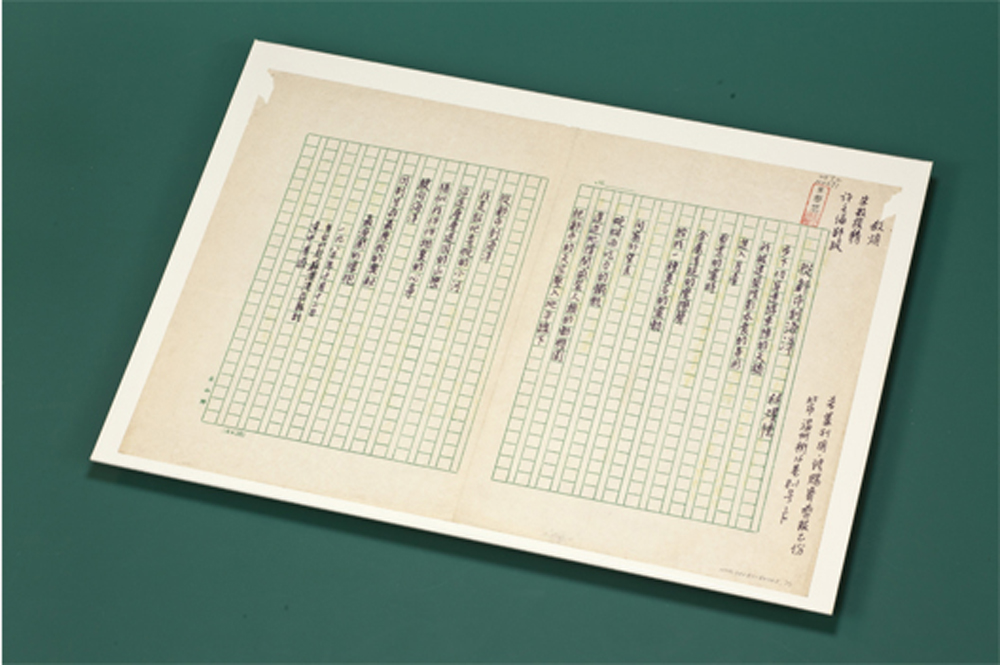
Lin Yao-teh (1963-1996) was an author from Taipei City, Taiwan. Lin was an advocate of urban literature during the 1980s, producing many original works in the genre. Critics note Lin held a deep-set humanistic concern for the changes, contradictions and conflicts inherent in modern society. He used “city” and “sea” as literary foils.
manuscript; Great Sea Journal of Poetry (founded by Chu Hsueh-shu)

Chiu Miao-chin (1969-1995) was a native of Changhua, Taiwan. The original manuscript of Eccentricities survives today only in photocopy. This piece has all the hallmarks of meta-fiction. Surrounded by urban bustle, Chiu describes in rich verbiage capitalism’s corrosive decay of the family and social mores.
1990; manuscript; provided by Lai Hsiang-yin
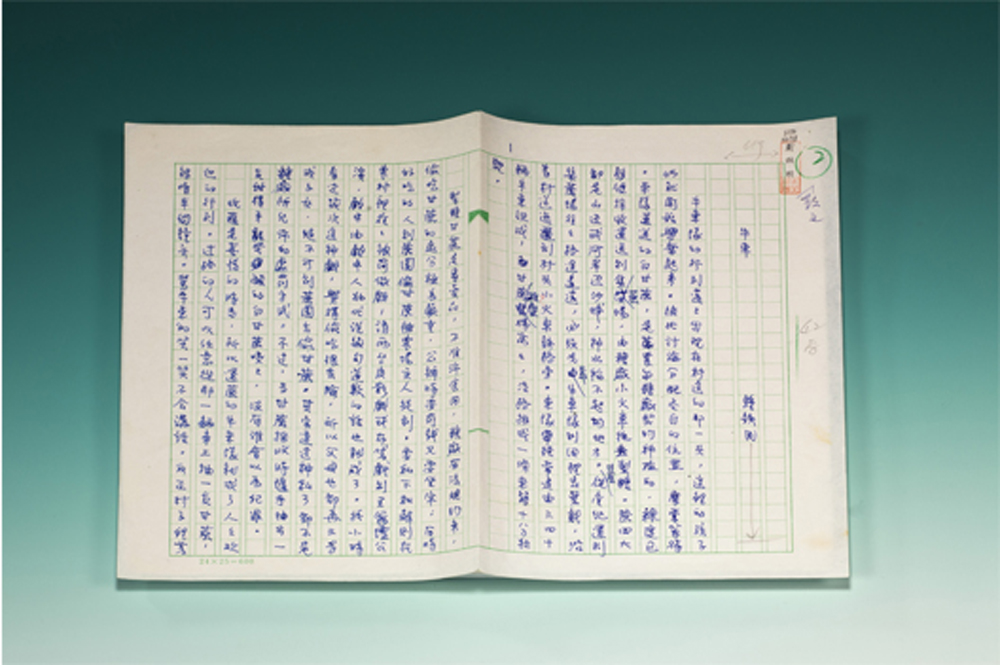
Chung Tieh-min (1941-2011) was an author from Meinong in Kaohsiung County, Taiwan. The author’s many works, set in rural Taiwan, highlighted the imperative importance of preserving rural ways and the environment – movements in which he was personally very active. “Yu Chung-Hsiung’s Spring” takes on the chronic rural issues of public education and continuing education past the junior high school level. It is a humanist, socially relevant work.
donated by Cheng Chiong-ming

Chang Wen-huan (1909-1978) was a native of Meishan in Chiayi County, Taiwan. He finished The Castrated Cock in 1942, which was published in Vol. 2, No. 3 of Taiwan Bungei (Taiwan Literature). It narrates the story of his female protagonist’s difficult journey from fatalism to enlightenment. In gradually assuming authority over her own body and future, the author takes an innovative approach to dissecting and exposing the severe and callous nature traditional culture.
clean manuscript; donated by Chang Yu-huan
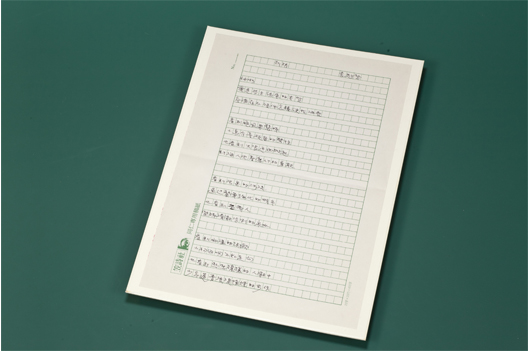
Lee Kui-hsien (1937 - ) is an author from Danshui (Tamsui), Taiwan. His original 1980s poem “My Religion is Love” describes the poet’s passion for his native soil and home as well as his disdain for “truth seekers” and injustice. Lee urges poets to remain “spiritual fortresses” in order to cast a withering spotlight on society’s ills and shortcomings. This, he says, is the true “religion of love.”
K.T. Liu, Taipei, 1997; book; NMTL collection
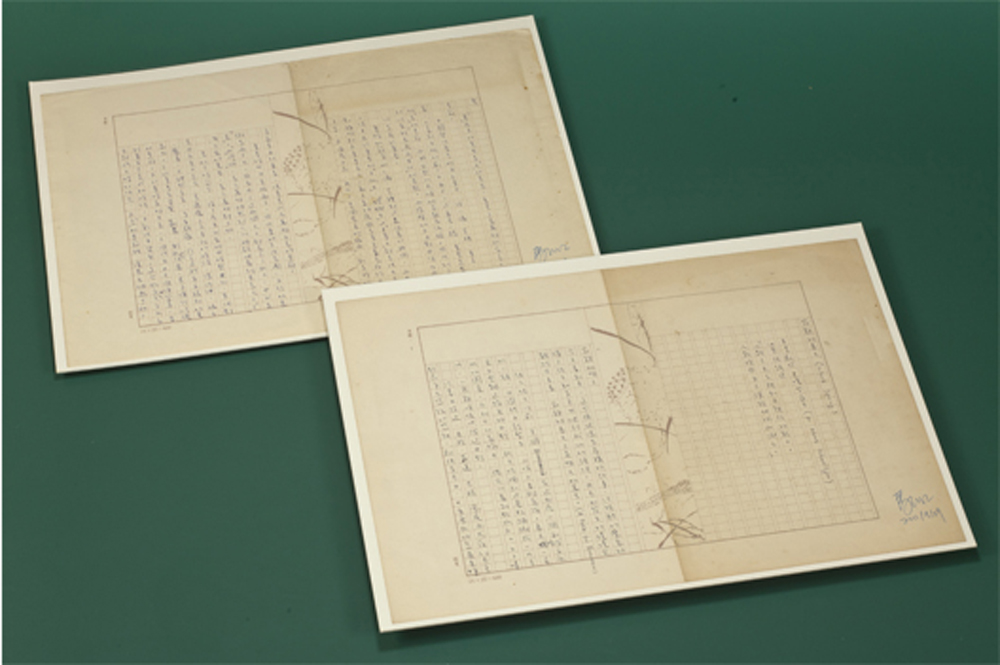
Ma I-kung (1948 - ) is a native of Taipei City, Taiwan. He was an active writer on environmental issues during the 1980s and strong advocate for environmental education. Ma translated Rachel Carson’s seminal work Silent Spring into Chinese to awaken the Taiwan public to the imperative necessity of humanity to restore balance to its relationship with nature and the environment.
manuscript; donated by Ma I-Kung
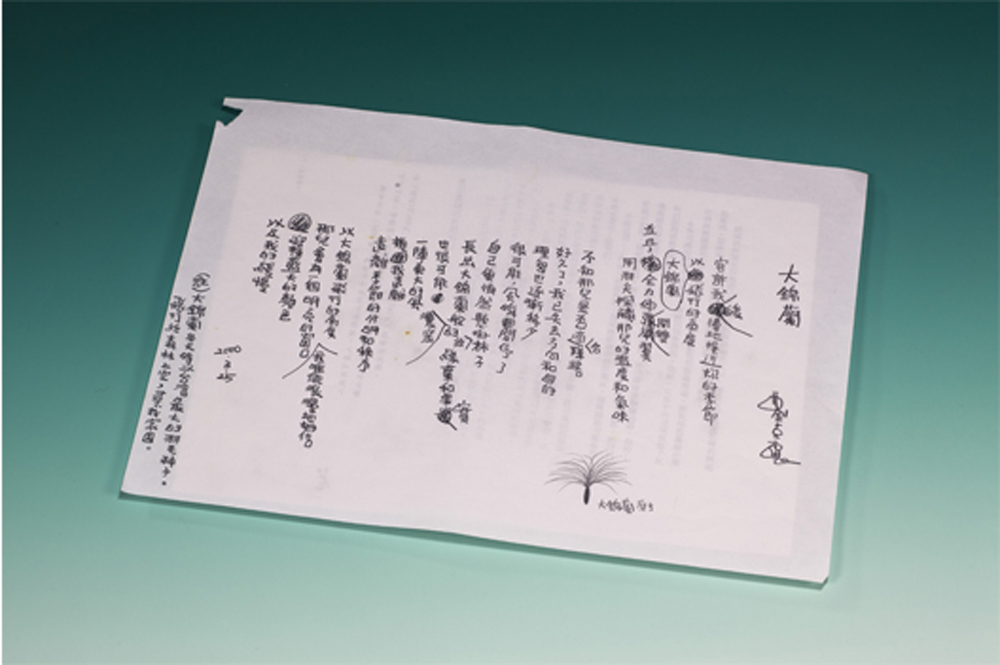
Liu Ko-hsiang (1957 - ), aka Liu Tze-huai, is a native of Wurih in Taichung County, Taiwan. Impromptu writings “Bentham Cablecreeper” (later renamed The Cablecreeper’s Winter) and “The Story of a Wound” were included in the author’s 2001 work, At My Most Beautiful. These pieces intermingle poetry with nature and nature with prose to nurture limitless potential.
2000s; manuscript; provided by Liu Ko-hsiang
Works of literature abound with memorable leading ladies. The role of women in literary works often differs significantly between men and women authors. Social developments in Taiwan have also infused change into the roles and expression of literary characters. Differing gender perspectives record different takes on the same period of history or social setting. Like a camera taking the same shot from different angles, men and women authors have different perspectives on beauty and sorrow.
The troubles of youth also change with the time, from rebelliousness, love and sexual exploration to overcoming difficulties and self-realization. Feminist literature, stories of youth, exposition of eroticism, stories of homosexuality all blossom in a healthy literary garden. From the feminist movement of the 1970s to the sexual and gender freedom movements of the 1990s, gender topics have evolved with the evolution of Taiwan society and instilled Taiwan literature with various different female perspectives and personas.
Women have been an important driving force behind postwar literature in Taiwan. Their works ranked amongst the best examples of literature promoting Mandarin as the island’s new language of unity. From “home-country” essays to modernist novels; from the rise and exploration of feminist issues to the emergence of the feminist movement, women authors have been active … writing about everything from family life to national consciousness and from individual to shared experiences from distinctly women’s points of view.
The boy in the next classroom, the girl at a nearby school, homosexual and heterosexual love … during youth’s turbulent years, boys and girls face so many issues that are complex, challenging and not easy to face. Literature captures the opposite sex, adults and the world through the eyes of the teenager. It also explores the journey to maturity at different times in Taiwan’s modern history.
Eroticism pervades the literary form, from explicitly banned books to acclaimed award-winning novels. Running the gamut of themes from sexual suppression to sensual exploration, literature reveals the changing status of women in society and the gradual march toward sexual liberation. Erotic writing today focuses much less on the individual experience, with attentions turned to considerations of the body and power and difficult issues related to the intricate web of relationships between national, political and role consciousness.
Literature addressing homosexuality was published even while Taiwan was a highly conservative society. This genre explores socially controversial issues such as the value perspectives that prioritize continuance of the family into the next generation and hot button issues behind inner family tensions. The increasingly liberal society that found its feet in the 1990s, encouraged the elevation of alternative genres and saw novels on homosexuality go mainstream. They boldly faced issues such as sexual passion and self-identification. Gender literature gradually breached the borders of dualism and introduced diverse perspectives on sexuality and sexual relations.
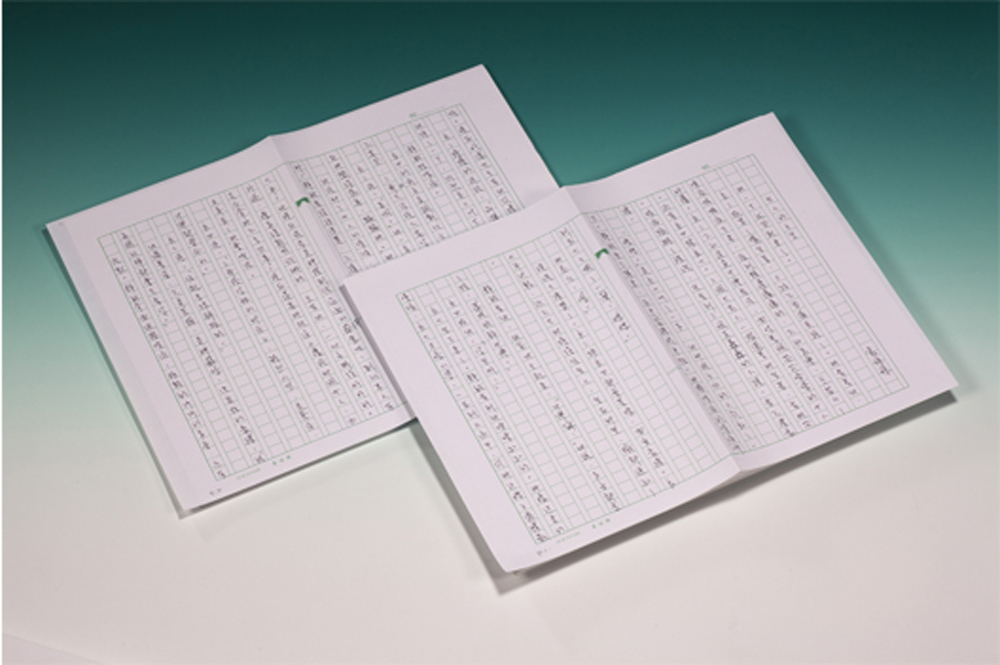
Yuan Chiong-chiong (1950 - ) is an author from Hsinchu, Taiwan. The author highlighted the interplay between modern sensitivities and everyday affairs to observe the feminine psyche and changes in male – female relational norms against the backdrop of the 1980s “economic miracle” and unprecedented prosperity. This work is a deep commentary on contemporary emotional issues
clean manuscript; provided by Yuan Chiong-chiong
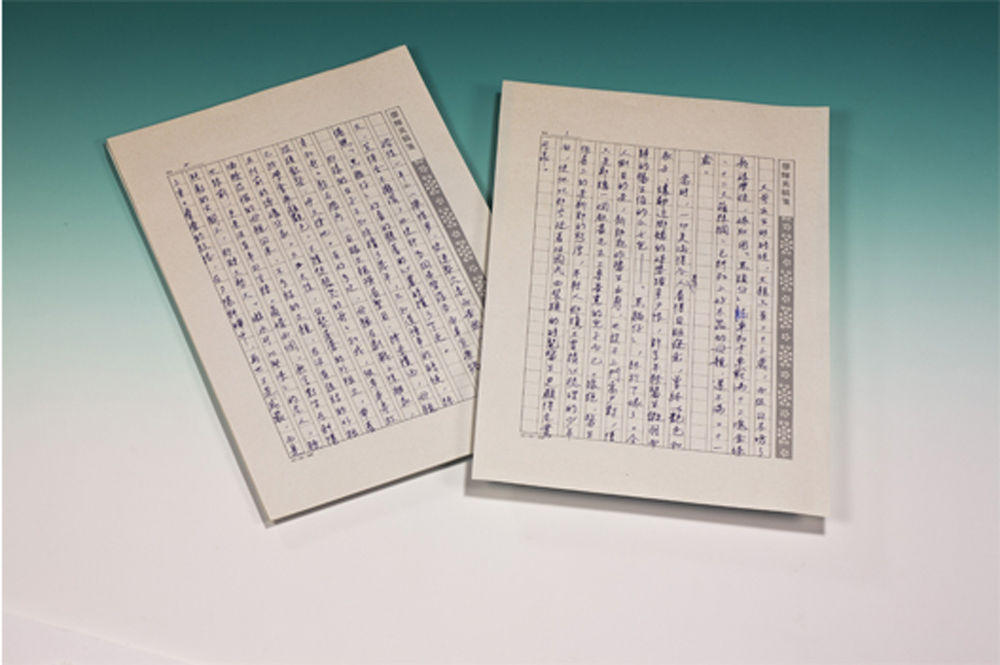
Liao Hui-ying (1948 - ) is a native of Fengyuan in Taichung County, Taiwan. This 1980s piece reflects on the female protagonist’s journey from childhood to marriage. Rapeseed is a hardy plant grown in Taiwan, surviving in even the poorest of soils. Liao chose the title as a metaphor for the inherent resilience of women.
clean manuscript; provided by Liao Hui-ying
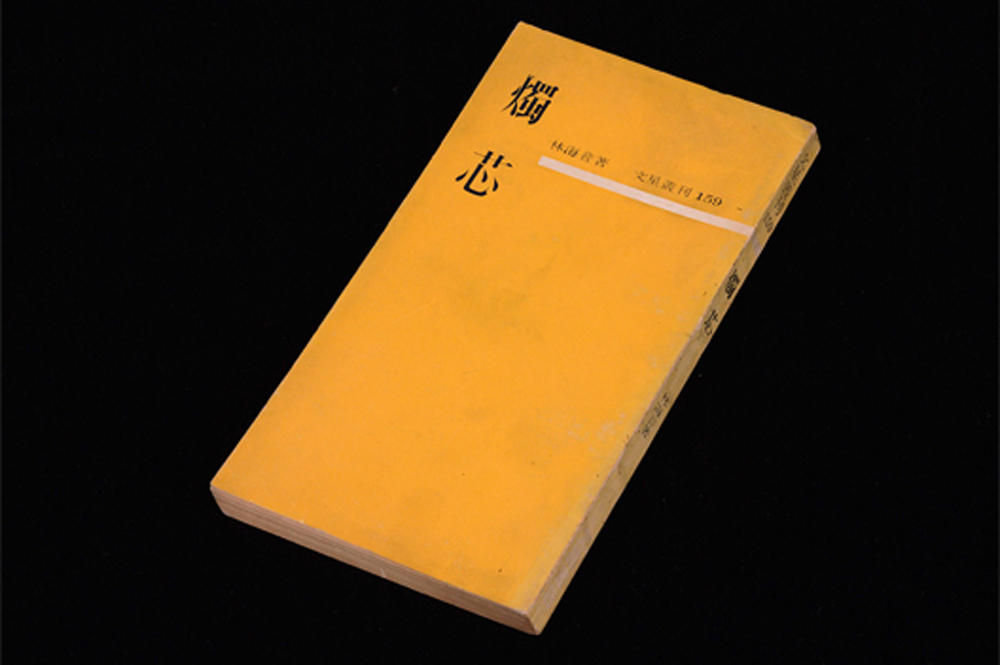
Lin Hai-yin (1918-2001) was a native of Toufen in Miaoli County, Taiwan. She used “candle” to represent the poor fate of women in traditional, conservative society. Her writings steer clear of bitter outcries and tearful pleadings, but nevertheless very effectively convey the endless sorrows of women in calm, even conciliatory, words.
2004; clean manuscript; donated by Hsia Tsu-chuo
1981; Literature Press, Taipei; book; provided by the NMTL
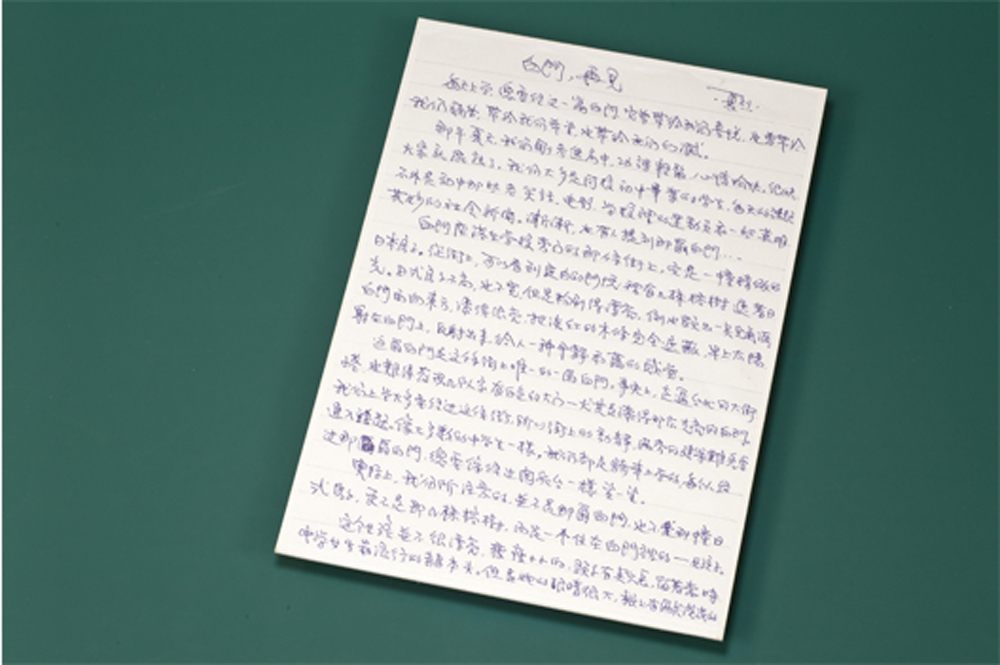
Hsia Lieh (1940 - ), aka Hsia Tzu-chuo, was born in Beijing and spent his formative years in Taipei. White Gate, Farewell!, a short essay Hsia published in his high school newspaper, effervesces teenage brashness. Although almost never spoken, the name “White Gate” – an allusion to the main gate of Taiwan’s best boy’s high school –stirs a fiery passion in young men’s souls that ultimately fizzles into disappointment. Such are the days of youth.

Lee Tung (1953-2004), aka Lai Hsi-an, is an author from Hualien in eastern Taiwan. Set in the Penghu Archipelago, this novel tells the story of seven youth who make a pact to meet up again two decades later. The pact proves difficult to fulfill, but elicits deep-set emotions and memories. Narrating the changing ebb and flow of life, Lee takes a romantic, nostalgic tack to tell the life stories of his characters.
1990s; manuscript; donated by Chu Chien-tai

Lin Huai-min (1947 - ) is an author from Xingang in Chiayi County, Taiwan. Deformed Rainbow was Lin’s first published novel. It describes a university student’s fruitless search for purpose in a life he finds stiflingly boring. His death and passage into the spirit world still fails to bring happiness. The dark frustrations of youth, the fast pace of social change and lack of hope all pervade the palpable “boredom” of youth.
1968; Buffalo Book Co., Taipei; book; NMTL collection
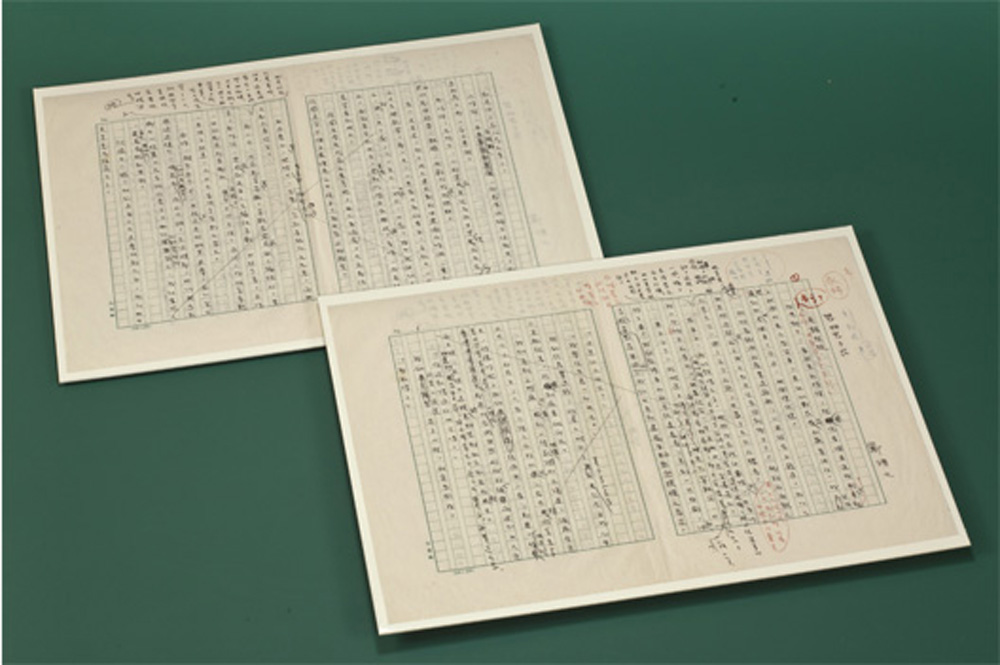
Cheng Ching-wen (1932 - ) is an author from Taipei City, Taiwan. His short story Acacia Flowers follows the story of its female protagonist. It uses a light, easygoing style to highlight the conservatism and separation imposed by tradition on the two sexes. Speaking softly of fading time and unfinished business, the author encourages the reader to think about what he or she would do differently if time could be reversed.
1980s; manuscript; provided by Cheng Ching-wen
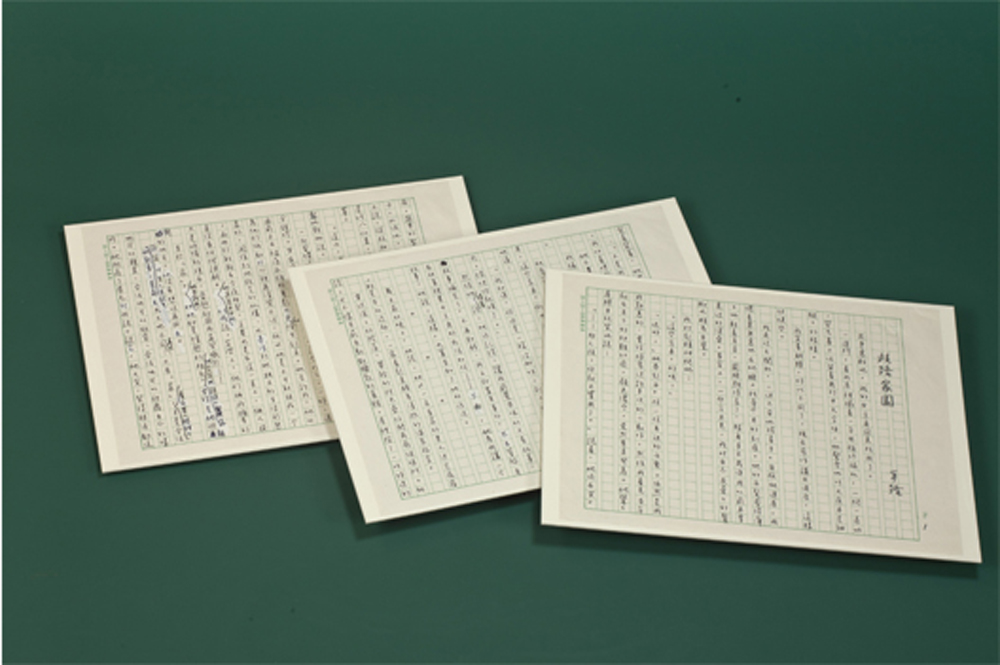
Ping Lu (1953 - ) is a native of Kaohsiung, Taiwan. Home on the Crossroads is a short story included in her Correspondence with a Centenarian. The narrative describes history as a bill awaiting payment and uses human relationships as a concrete example of this idea. Ping deals deftly with interwoven issues of ethnicity and gender, creating in the process her own distinct literary style.
1990s; manuscript; provided by Ping Lu

Chi Ta-wei (1972 - ) is a native of Dajia in Taichung County, Taiwan. A Red Rose Soon to Bloom in His Eye and Your Palm, published around 2000, was included in the anthology World of the Senses. The author sees the concept of gender as significantly more fluid than the traditional binary model. The deviant sperm in the story is the straw that breaks the back of the mythological underpinnings of heterosexual love.
clean manuscript; provided by Chi Ta-wei
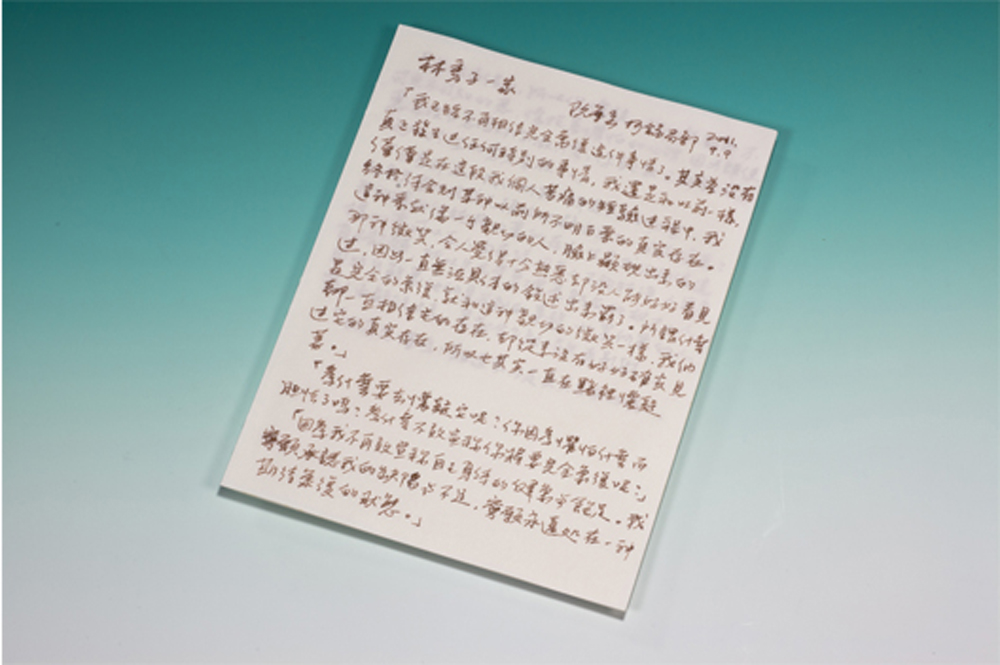
Roan Ching-yueh (1957 - ) is a native of Taipei City, Taiwan. His “The Family of Hsiuzi Lin” is one of three stories in his Tung Lake Trilogy. The narrative follows the life of Hsiuzi Lin through her withering misfortune and pain and ultimate search for redemption.
manuscript; provided by Roan Ching-yueh
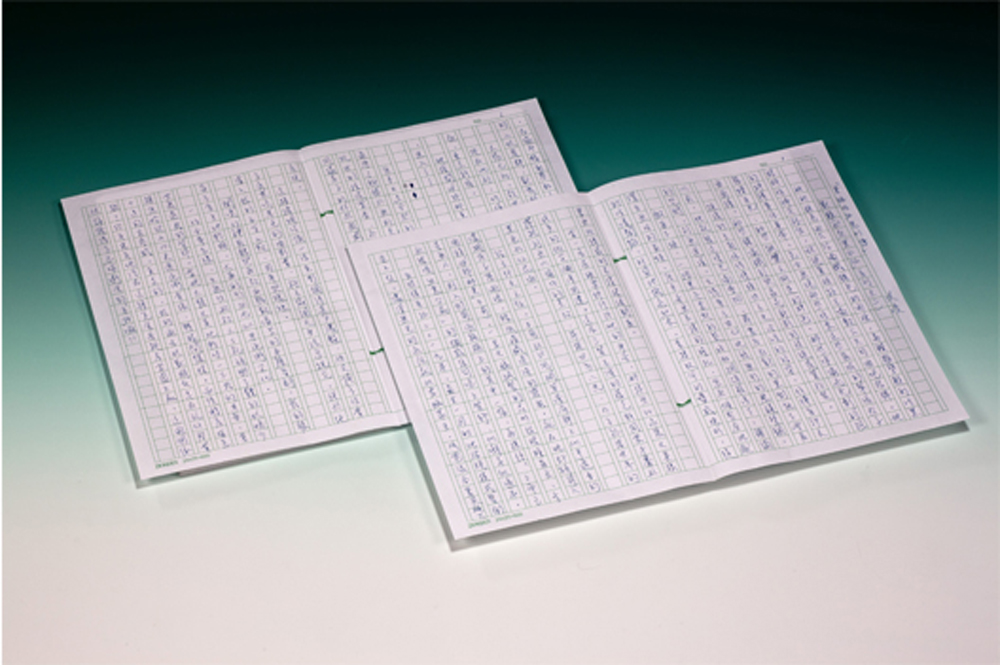
Hung Ling (1971 - ) is a native of Taichung, Taiwan. Selected Biographies, an original work of science fiction, is a hybrid linguistic and literary work as well. This work in the sensual genre treats “blood” as the outward manifestation of infatuation with beauty and the motivation for continued creativity.
clean manuscript; provided by Hung Ling
Buffeted by many modern social and philosophical movements over the past century, Taiwan has both accepted the “call” of the world and shoehorned itself into world literary circles. Taiwan literature in translation gives academics and readers overseas a better understanding of local literature and introduces the works of Taiwan authors into the international pool of creative writing and literary research.
Taiwan has been a vibrant font of literary activity for many decades, publishing a vast amount of quality creative output in Mandarin that is expanding and enriching literature in Mandarin worldwide. Our current digital age is linking local literature even more firmly with the world. Changing literary formats has opened literary creativity to everyone, opening a future for Taiwan literature of even greater depth and diversity and creating expectations of new sweet fruits to come.
Taiwan was widely promoted as “Free China” after 1949. Policies promoting Chinese culture and reaching out to overseas Chinese had the effect of encouraging many Chinese living around the world to relocate to the island to work and study. Not a few went on to productive literary careers. Cold War divisions also helped foster ties between cultural circles in Hong Kong. From the 1980s onward, Taiwan’s literary award calendar and publishing industry had embraced world Chinese literature and begun to infuse international influences into the domestic literary scene.
Pioneer examples of literature and other publications in digital form appeared as early as the 1980s. The “Bulletin Board System” or BBS was launched in the 1990s. Authors used to publishing in ink on paper now had a revolutionary medium in which to create and distribute their works. Shortly before the close of the Millennia, newspaper supplements began going digital, followed by launch of Internet news channels, blogs and other digital information sources. It became increasingly easy for individuals to establish their own media channel. Traditional literary publishing channels were thus forever transformed. In the virtual realm of the Internet, readers need no longer be passive absorbers of information. Literature can now be created and critiqued and posted in real time, fostering interactive participation. The Internet has developed into an incredibly open and welcoming forum for people from all walks of life and every opinion to get closer and more involved in literature.

This is primarily a compilation of correspondence kept by Tu Kuo-ching related to his ideas and plans for publishing the journal Taiwan Literature English Translation Series in the United States.

Zhang Jinzhong (1956 - ), a native of Pahang, Malaysia, produced this extensive academic discussion of Chinese-language literature in Malaysia. The manuscript on display here was the author’s final markup copy finished up before the book went to press.
manuscript; donated by Zhang Jinzhong

Huang Jinshu (1967 - ) is an author from the Malaysian state of Johor Bahru. This work suggests the increasing profile of Malaysia’s Chinese-language literature in Taiwan literary circles. This work drew on liberal art sources in Taiwan to elicit the history, present and future of Chinese-language literature in Malaysia as well as its relationship to Mainland Chinese and Taiwanese literary circles.
manuscript; provided by Huang Jinshu
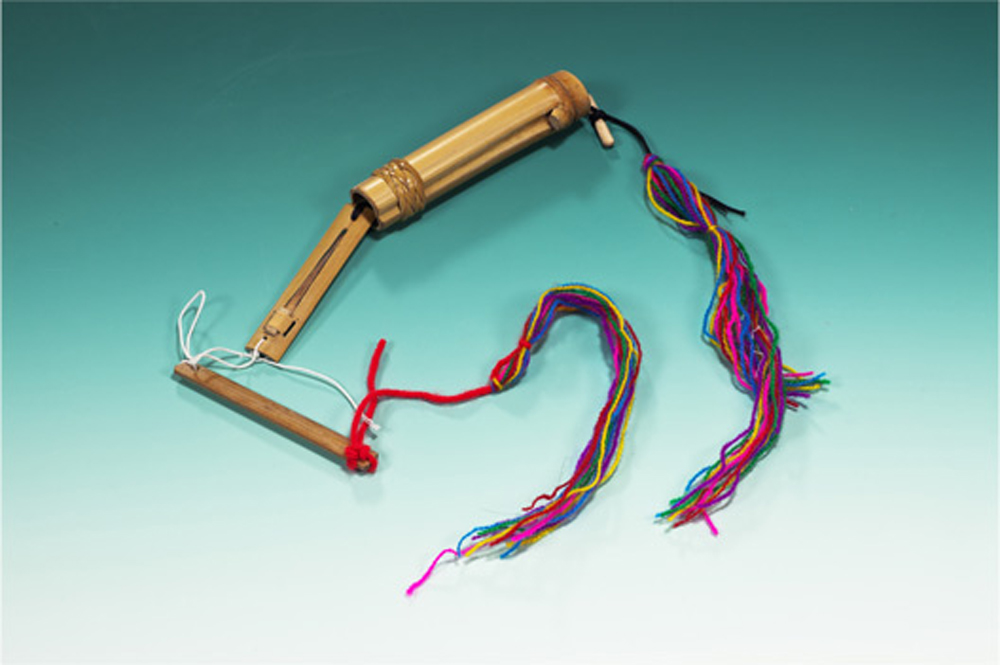
Lifok 'Oteng, aka Huang Kui-chao (1932 - ); ethnic Amis from Taitung County). Mouth harps are prevalent among most of Taiwan’s indigenous Malayo-Polynesian groups. They are played by men and women, young and old alike, and used in communications and as an accompaniment to music, romance, ceremonies, and dance. Display Accompanied by Mouth Harp Music
(handcrafted by Lifok ‘Oteng)
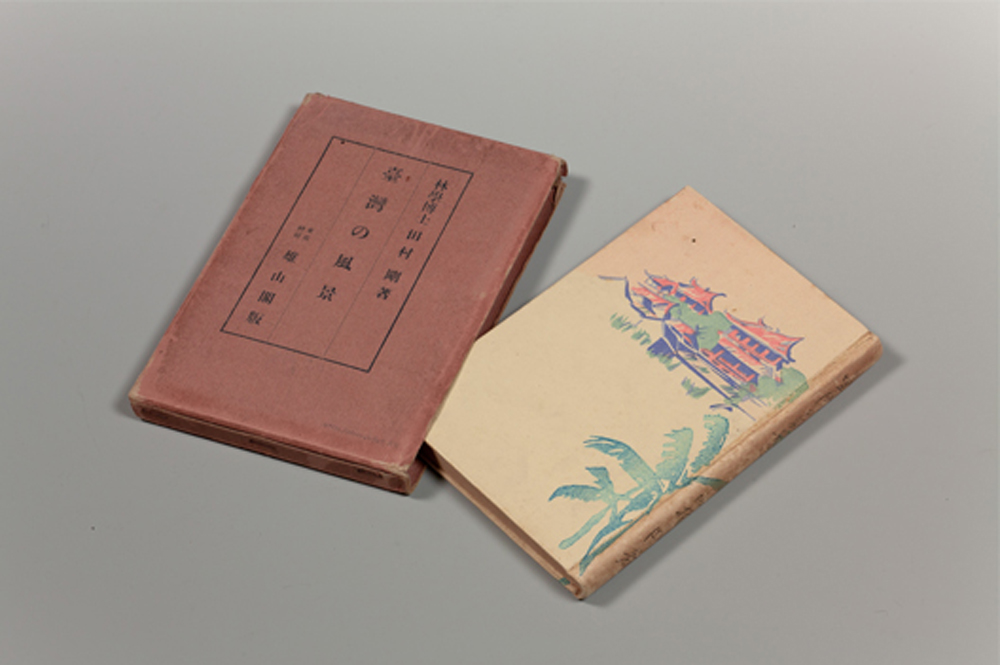
Tsuyoshi Tamura (1890-1979) was a forestry researcher from Kurashiki, Japan. He arrived in Taiwan in 1928 to survey in East Taiwan for the planned new Tsugitaka-Taroko National Park (Tsugitaka Taroko Kokuritsu Kōen). Scenery of Formosa, published by Yūzankaku Shuppan, Tokyo, compiles many of his sketches and observations from that time.
book; donated by Huang Teh-shih
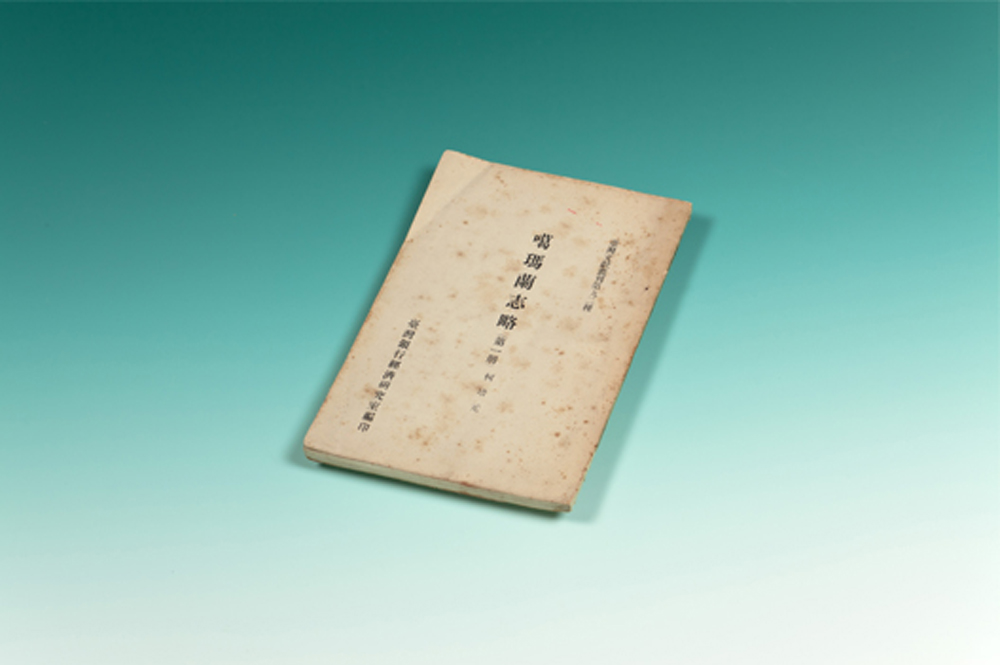
Ko Pei-yuan (date of birth and death unknown), aka Fu-tzu was a native of Licheng in Shandong Province, China. A Qing government official, Ko was posted to Kavalan (present-day Yilan) in 1835. He served there just one month, and left the island soon after. Outline Description of Kavalan is a personal narrative of his experience, with a particular focus on the region’s indigenous peoples. The poem featured here describes the plight of the ‘cooked’ (i.e., civilized / Sinicized) natives who were the chronic and unwitting targets of Chinese settler schemes and trickery.
Taipei Bank Press, Taipei, 1961; book; donated by Hsu Ping-ting
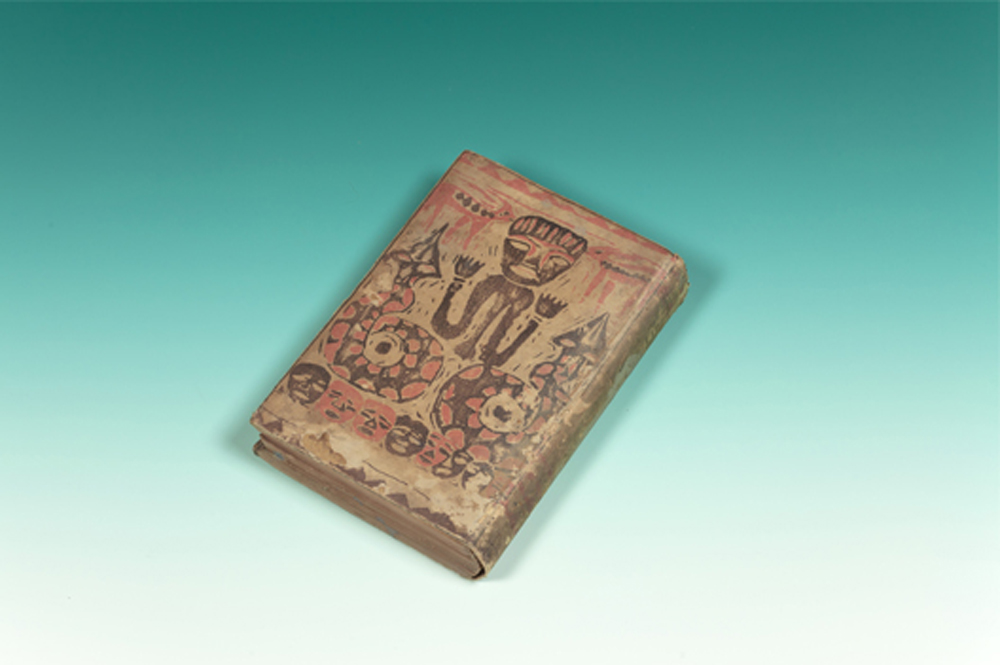
Japanese anthropologists Yūkichi Sayama and Yoshihisa Ōnishi came to Taiwan in the 1910s to observe and record the traditional stories and legends of Taiwan’s indigenous Malayo-Polynesian tribes. One of the tales recounts an Atayal legend about a “pile of pooh” giving birth to man.
1923; Sugita Shigezō Booksellers, Taihoku (Taipei); book; donated by Huang Teh-shih
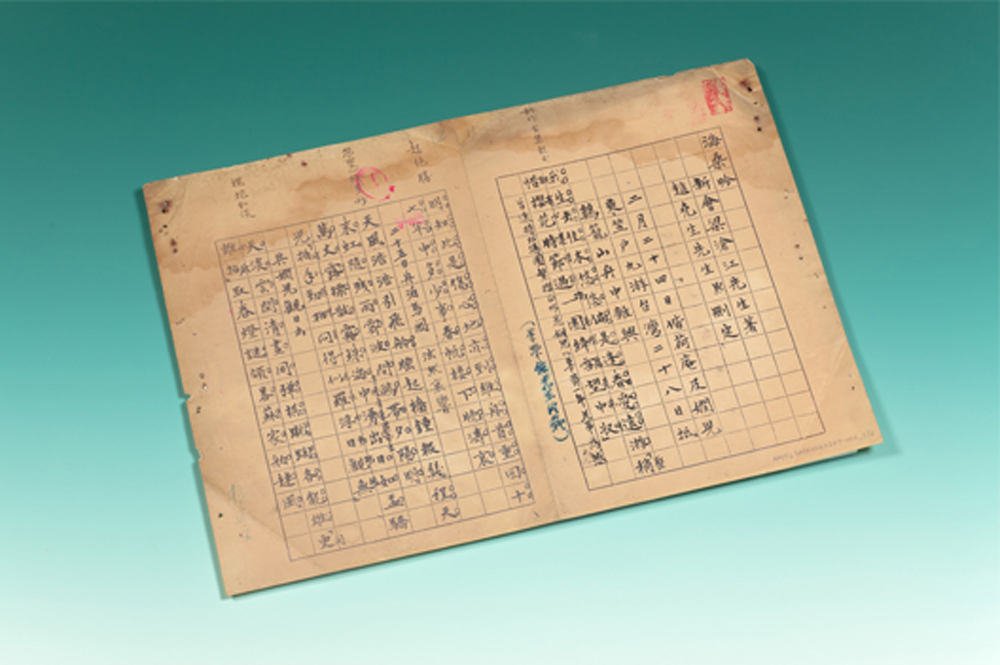
Liang Chi-chao (1873-1929), aka Chuo Ju, was a native of Xinhui in China’s Guangdong Province. He co-authored works with leading Qing Dynasty reformist Kang Youwei and, after participating in the ultimately suppressed 1898 ‘100-Days Reform’, he escaped into exile in Japan. He sailed to Taiwan from Yokohama in 1911 and wrote on his myriad experiences throughout the island in Song of the Great Wide World. Unfortunately, the full text of this work has been lost to posterity.
manuscript (reproduction); donated by Huang Teh-shih
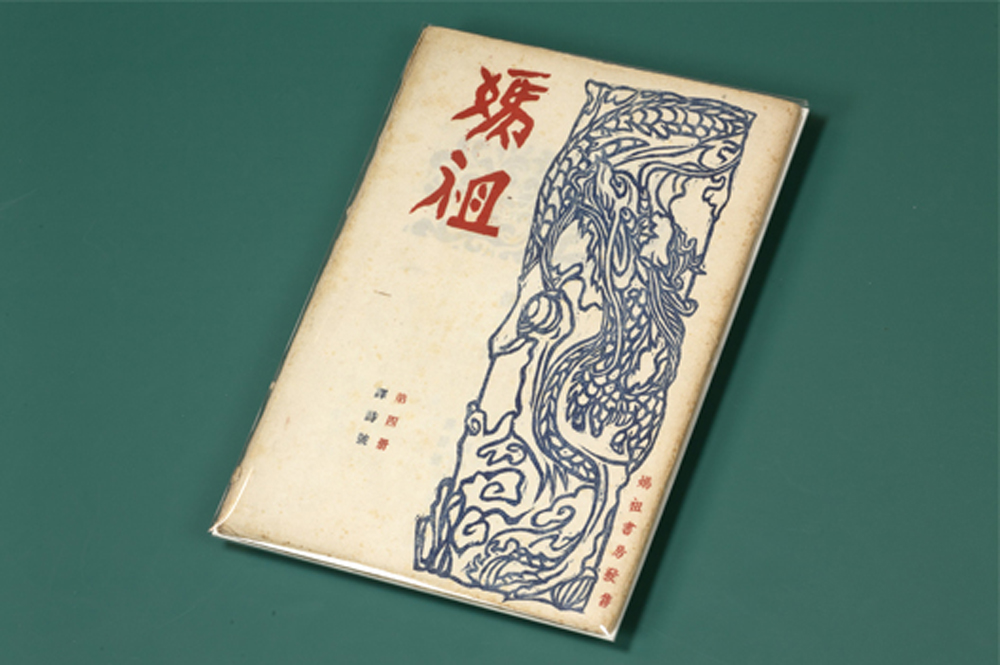
Mitsuru Nishikawa (1908-1999) was from Wakamatsu (Aizuwakamatsu), Japan. He came to Taiwan with his father in 1910, where he lived, studied and was active in various literature-related events and activities. Matsu, published by Misuru’s Matsu Publishing House (founded 1934), regularly featured the lithographic art of fellow Japanese Tateishi Tetsuomi and Kanda Yataro on its cover. Matsu was published until 1938.
Maso Shobō (Matsu Publishing House), Taihoku (Taipei), 1937; journal; provided by NMTL collection
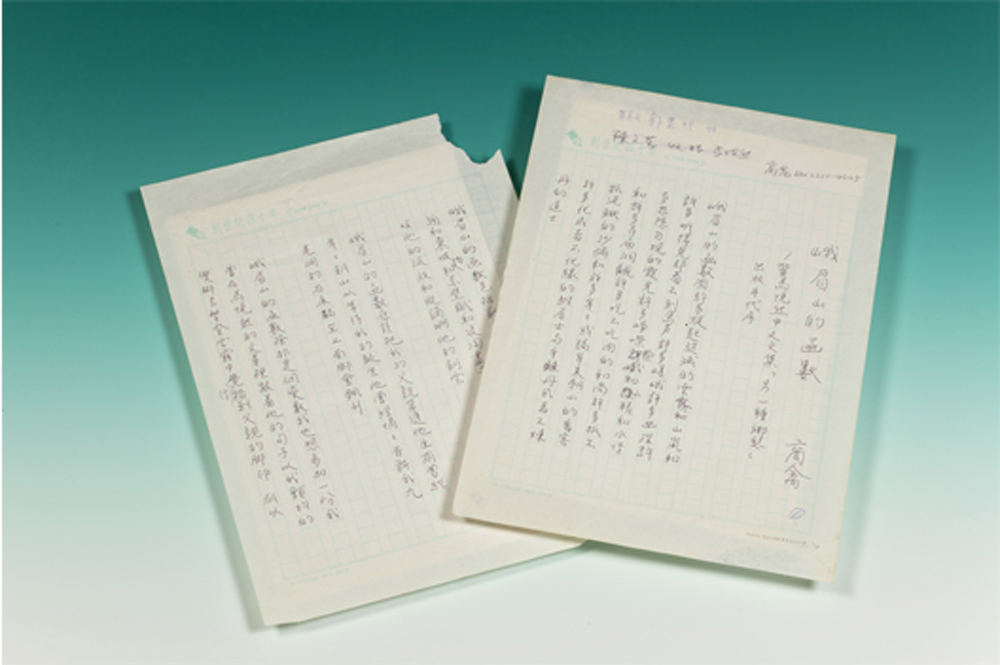
Shang Ch’in, aka Luo Hsien-yen (1930-2010) was a native of Gong County in Sichuan Province. Shang arrived in Taiwan with the ROC military in 1950. He wrote original poetry, was a member of the Epoch Poetry Society and influenced the development and shape of Taiwan’s modernist poetry movement. “The Functional Nature of E-Mei Mountain” was written as a preface for Swedish linguist Nils Göran David Malmqvist’s Another Nostalgia. Impressed by his poems, Malmqvist had earlier translated and published Shang’s poetic works into English and Swedish, which introduced Shang Ch’in’s works to a worldwide audience.
manuscript; provided by NMTL
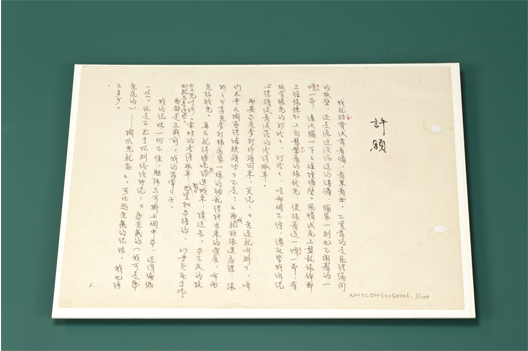
Chu Hsi-ning (1927-1998), a native of Linqu in Shandong Province, arrived in Taiwan in 1949. The Family of Tai-Ping Hwa was Chu’s last work. Set in the late Qing Dynasty, this weighty and epic novel narrates an 18-year span of time to weave the story of an average family forced to deal with the whirlwind changes sweeping their nation and personal lives.
1980s; manuscript; donated by Chu Tien-wen
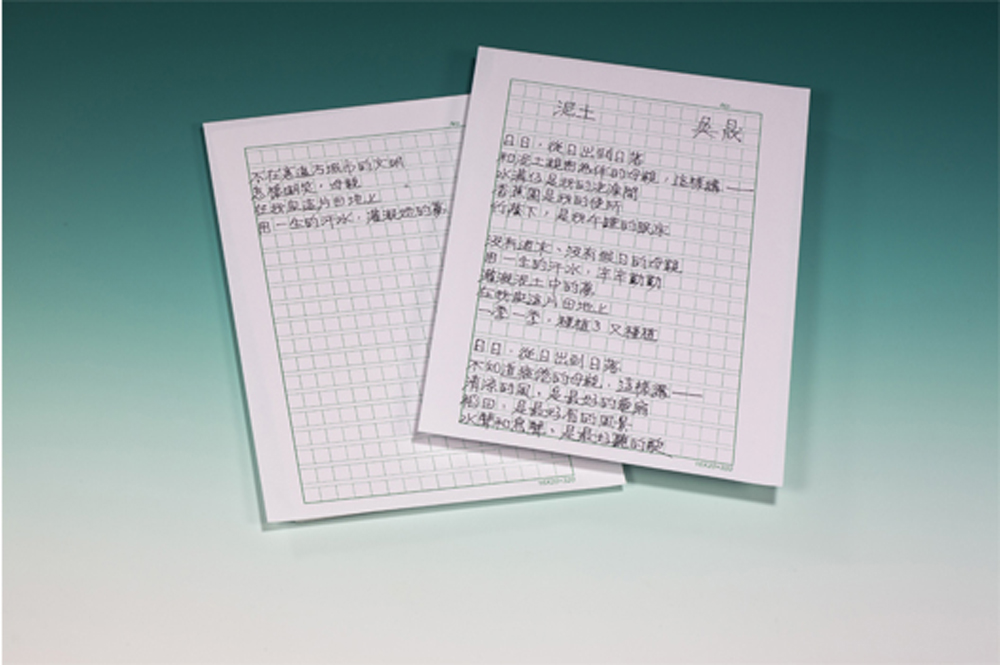
Wu Sheng (1944 - ), aka Wu Sheng-hsiung, is a native of Changhua in Central Taiwan. His mainly poetic works reflect his personal observations on life and philosophical outlook firmly rooted in his beloved Taiwan. His works have been set to music and released by popular music artists Lo Ta-yu and Wu Zulin.
clean manuscript; provided by Wu Sheng

Lin Fan (1950 - ), aka Lin Jui-ming, is a native of Tainan City, Taiwan. Lin is a history scholar and creative writer with a particular enthusiasm for poetry. Orchid Island of the Yami was published in 1984 at a time when indigenous literature was just starting to earn attention. Lin’s realist style produced an original work rich in symbolic imagery that painted a vibrant portrait of life on remote Orchid Island off Taiwan’s southeast coast in the Pacific.
manuscript, 1980s; provided by Lin Jui-ming

Yang Mu (1940 - ), aka Wang Ching-hsien, is a native of Hualien County in East Taiwan. His poem “Lau Creek Chih-Nan Village” was included in the anthology, Mealybugs. Yang tries in this work to transform poetry into a work of music. The banks of Lau Creek near Chih-Nan Village teem with life that burst forth into unrehearsed song, which, when interwoven with the natural rustle of surrounding nature, invites the reader to become absorbed into the work on both a poetic and musical plane.
manuscript, 1980s; provided by Yang Mu

Wang Chang-hsiung (1916-2000), aka Wang Jung-sheng, is a Taipei City native. This 1939 manuscript was Wang’s first submission to the Taiwan Shinminpo (Taiwan New People’s Post). After 1945, it was translated into Chinese and serialized in the Taiwan Shin Wen Daily. The Tamsui’s Rippling Waters vividly describes life on Taiwan and conveys a comforting, homey feel.
manuscript; donated by the family of Wang Chang-hsiung
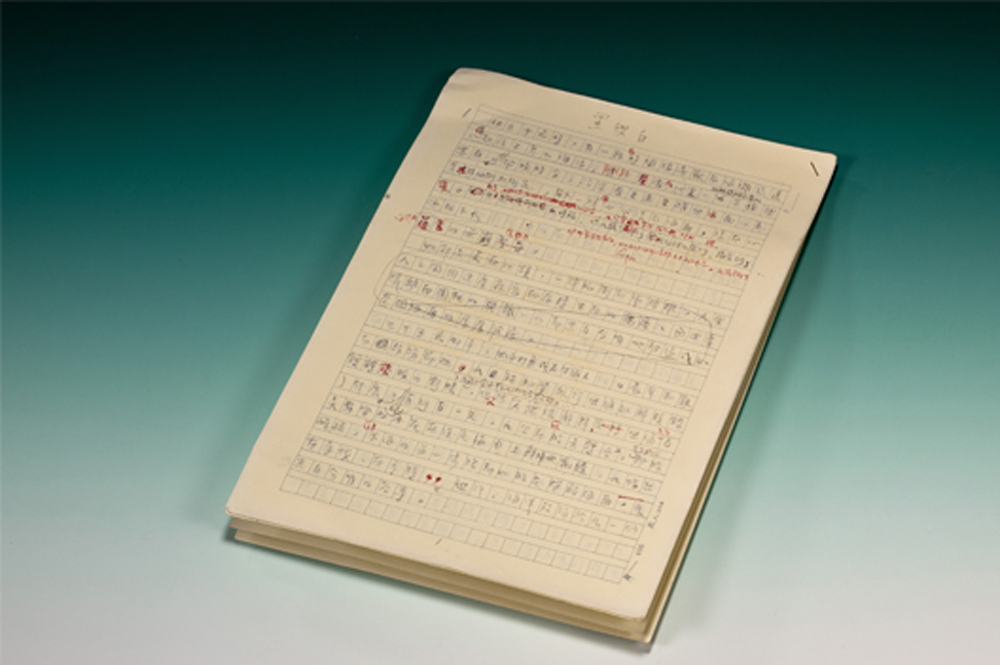
Liao Hung-chi (1957 - ) is a native of Hualien County, East Taiwan, and long-time ocean conservation advocate and educator. Black and White describes the author’s encounters with orca whales while working on Hualien-based whale conservation programs. Black and white, the orca’s two colors, are used as a metaphor for Liao’s direct and unceremonious character.
manuscript; provided by Liao Hung-chi

Kuo Shui-tan (1907-1995) was a Japanese Colonial Period author from the Chiali Salt Flats in Tainan County. His modern poem ‘O Sea, So Expansive, later translated from Japanese into Chinese, is a touching introspective on the cacophony of emotions at play in sending a daughter off to marriage set against the background of Tainan’s coastal salt flats. Kuo’s work is both stark and sentimental.
1930s; manuscript; donated by Kuo Sheng-ping
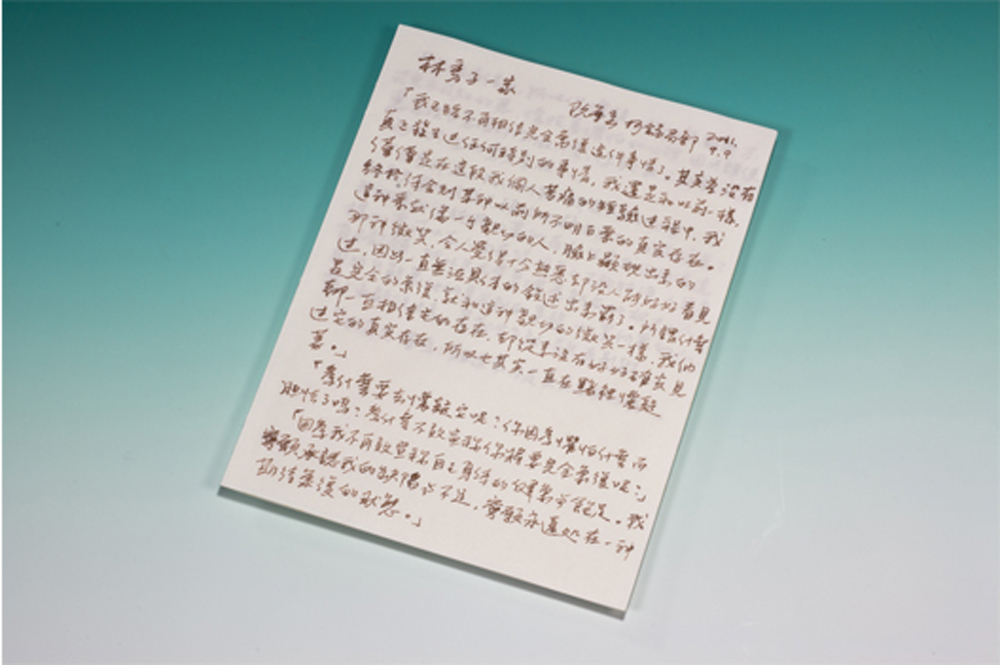
Roan Ching-yueh (1957 - ) is a native of Taipei City, Taiwan. His “The Family of Hsiuzi Lin” is one of three stories in his Tung Lake Trilogy. The narrative follows the life of Hsiuzi Lin through her withering misfortune and pain and ultimate search for redemption.
manuscript; provided by Roan Ching-yueh
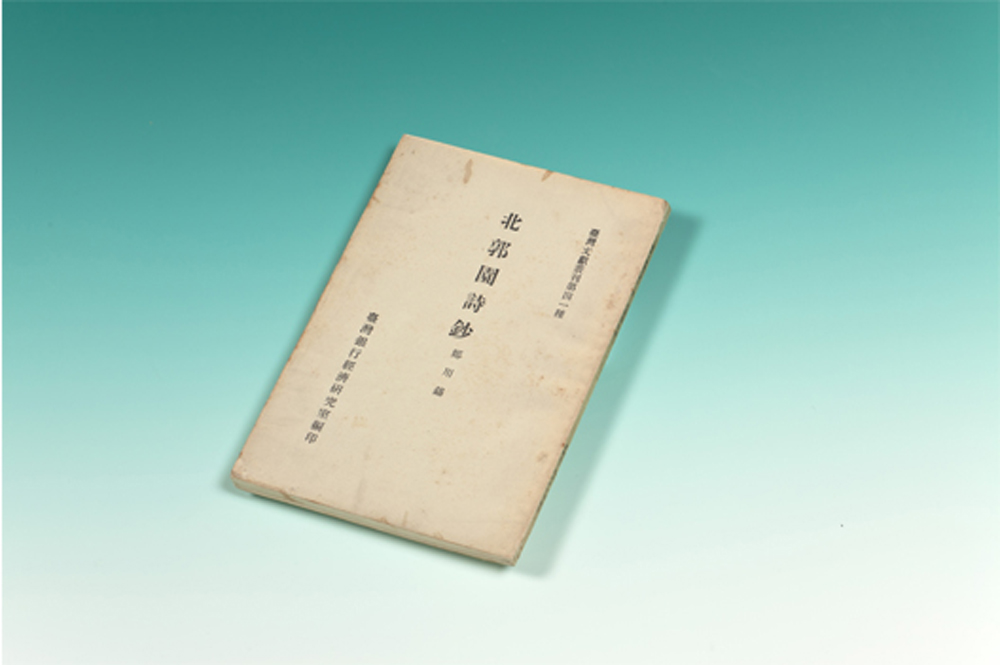
Cheng Yung-hsi (1788-1858) was a native of Zhuqian, modern-day Zhubei in Hsinchu County. Cheng wrote “Reconciliationism” in 1853 in response to the Zhang-Quan Clan Wars and followed up by traveling personally amongst the affected villages promoting a resolution of tensions. He longed to create peace in a land wracked by ethnic and intra-ethnic feuding and violence.
Taiwan Bank Press, Taipei, 1987; book; donated by Hsu Ping-ting

Chiu Chia-hung (1933 - ) is a Taichung, Taiwan native. Chiu published the 2.3 million (Chinese)-word Winds of Change over Taiwan at age 70 in 2002. In 6 chapters with names such as “The Calamity of the Second World War”, “Empire Lost” and “228 Terror”, he narrated the ebb and flow of modern Taiwan history and the life and times of its citizenry.
manuscript; donated by Chiu Chia-hung
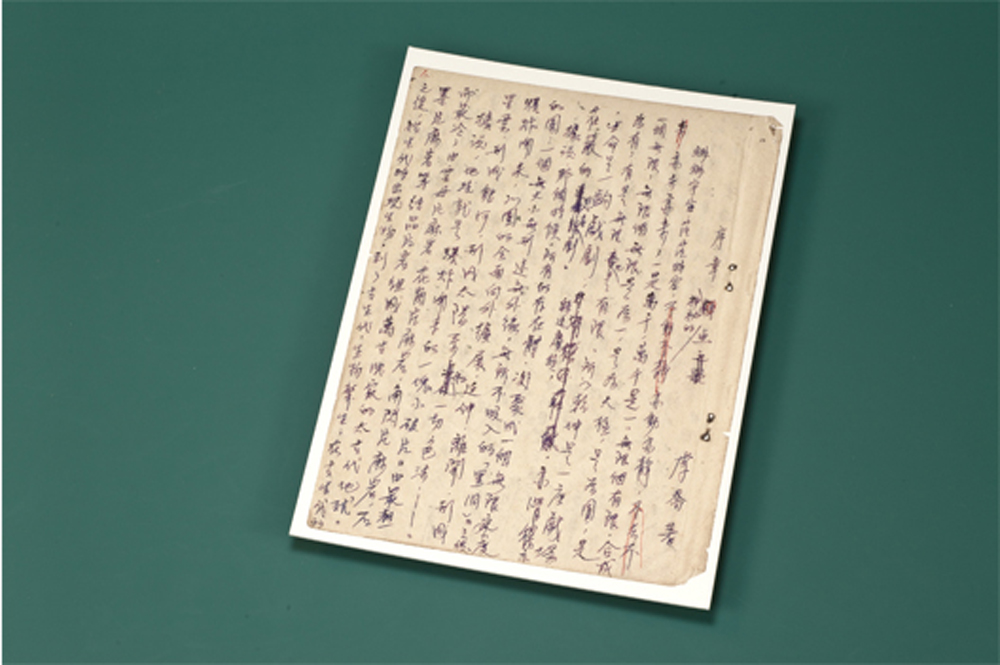
Lee Chiao (1934 - ), aka Lee Nung-chi, is a native of Miaoli, Taiwan. His Winter Night Trilogy was the literary package for his three works, Winter Night, The Lone Lamp and Deserted Village. Winter Night is a tale of the land that describes a century of struggle to tame the wilderness and make it productive. Through conflict and disaster, the protagonists’ determination to hold firm to roots dug deep into Taiwan’s soil creates a tale of bitter survival.
1979; manuscript; provided by Lee Chiao

Chung Chao-cheng (1925 - ) is a modern author from Longtan in Taoyuan County, Taiwan. Chung released the first installment to his Taiwanese trilogy in 1967 when he published Degradation. It was followed in turn by Dark Sea Journey and Song of Chatian Mountain. He couches his stories in the true-life experiences of Chinese Hakka. Focusing in on island-wide developments and social trends, Chung takes a sharp, clinical look at the conflicts he attributes to Taiwan’s long period of colonization.
1925; manuscript; donated by Chung Chao-cheng

Tsai Pei-huo (1889-1983) was an author from Beidou in Yunlin County, Taiwan. Chap-Hang Koan-Kian, published in 1925 and written in vernacular prose, states opinions and ideas on ten issues the author perceived as central to the health and growth of contemporary Taiwan culture. This work was written as a social education piece to inspire and motivate his fellow Taiwanese.
1925; book (reprint); NMTL collection
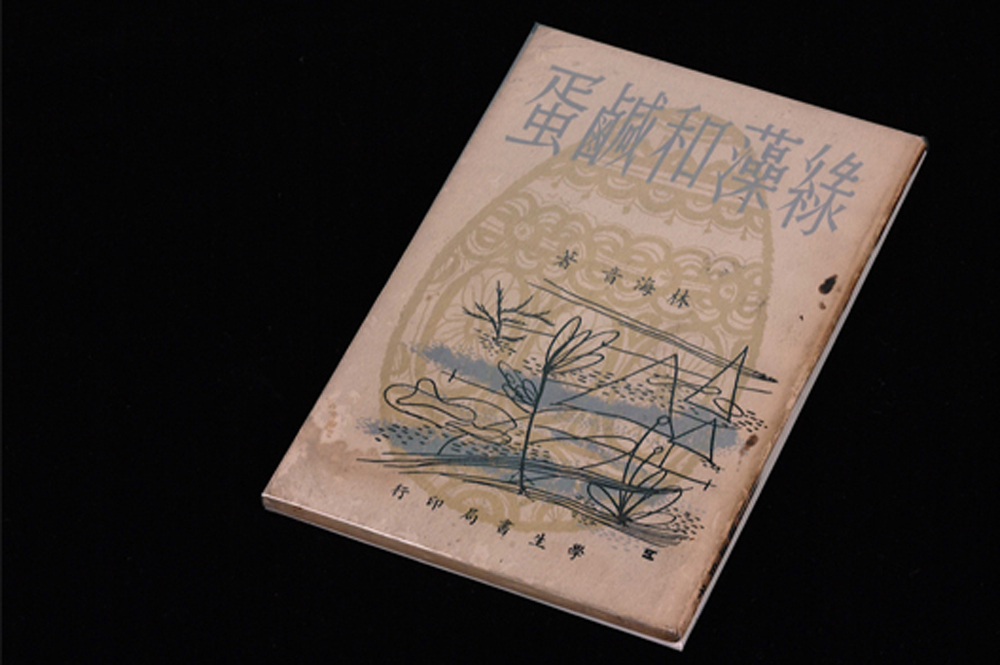
Lin Hai-yin (1918-2001) was an author from Toufen Township in Miaoli County, Taiwan. “Crab Shell Cakes” describes the meeting over food of a Mainland Chinese boy and Taiwanese girl during the early Retrocession Period. The girl finally puts to rest the boy’s constant bickering over their different backgrounds, and they find common ground in a shared language and anti-communist zeitgeist. Having found himself an unexpected resident, the boy mulls over the likelihood of Taiwan becoming his permanent home.
1982; Literature Press, Taipei; book; donated by Hsia Tsu-chuo

Lee Hsien-chang (1904-1999) was an author from Daxi in Taoyuan County, Taiwan. Lee spent part of the 1930s recording and writing down folk stories and songs from around the island. He compiled nearly one thousand songs and 22 stories into his Collection. He continued his research, becoming a strong advocate for valuing one’s own literary heritage over the empty ogling of foreign authors and literary traditions.
1936; book; donated by the family of Wu Shou-li
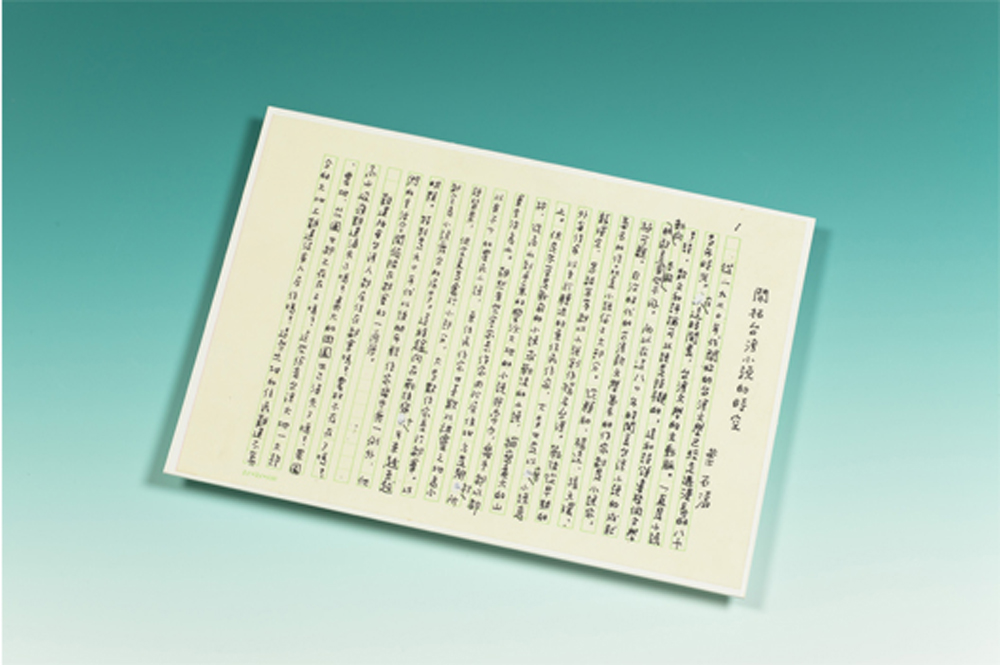
Yeh Shih-shou (1925-2008) was an author from Tainan, Taiwan. Yeh wrote Expanding Horizons for Taiwanese Novels as his general narrative on the Taiwan literature’s development since the 1920s. He urged a much grander vision for the novel genre in Taiwan, writing that only by addressing the whole spectrum of ethnic and clan groups on the island could the Taiwan novel reach its fullest and richest potential.
1990s; manuscript; donated by Yeh Shih-shou

Tung Fang-po (1938 - ) is from Taipei City, Taiwan. Tung finished his 11-year opus, Wave-Washed Sand in 1991. The story transgresses linguistic, cultural, national and ethnic boundaries in its examination of the problems of three families. Caught up in an emotional storm, the story steers a course toward coming to terms with fundamental human compassion.
1980s; manuscript; donated by Tung Fang-po
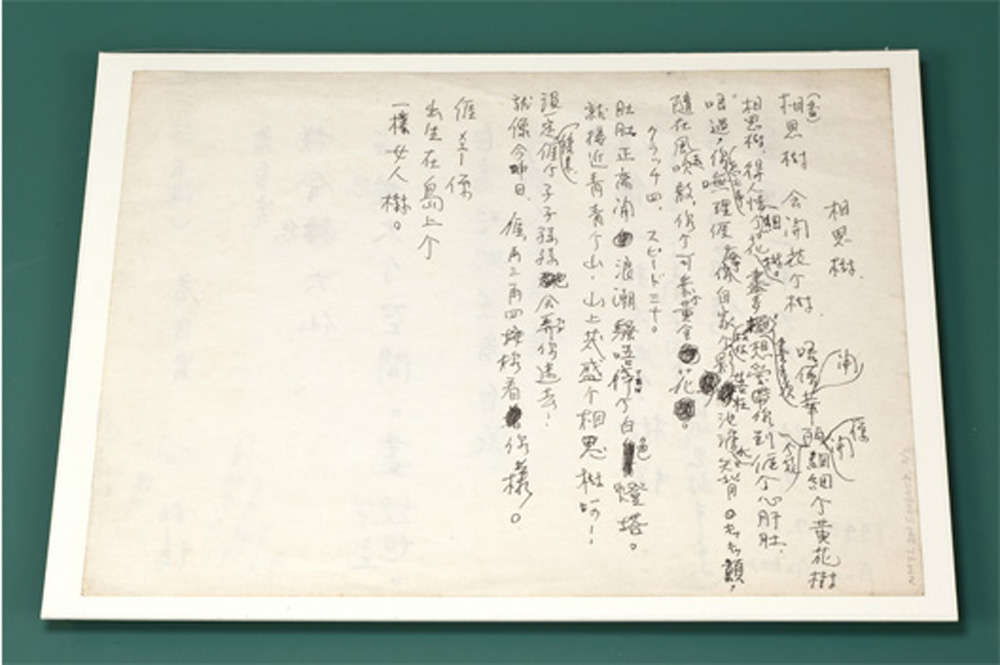
Tu-Pan Fang-ko (1927 - ) is an author from Xinpu in Hsinchu County, Taiwan. This manuscript of her Hakkanese poem “The Acacia Tree” eloquently illustrates the poet’s creative process. An accomplished writer of Japanese prose prior to 1945, Tu-Pan experienced a spiritual self-awakening in her native Hakkanese (a dialect of Chinese) after the Second World War, and she reoriented her creative output into this new medium. The rustic scenes of traditional Taiwan described in “The Acacia Tree” are metaphors for aspects of the author herself. A bridge between two linguistic ages, Tu-Pan uses poetry to pass island culture forward to new generations.
1968; manuscript; donated by Tu-Pan Fang-ko

Walis Naqang (1967 - ) is an ethnic Atayal from Heping in Taichung County, Taiwan. Walis completed Atayal Footprints during the 1990s in side-by-side Atayal (romanized script) and Chinese. The novel narrates a moving story that highlights the vital spirit of the Atayal people.
1990s; manuscript; donated by Walis Naqang
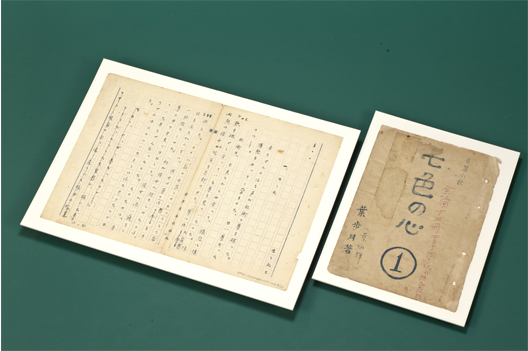
Yeh Pu-yueh (1907-1968), aka Yeh Ping-hui), was an author from Taipei City, Taiwan. He completed this epic novel in the 1960s. The Seven-Colored Heart follows the story of a Taiwanese family through three generations, highlighting their myriad and complicated cultural conflicts and the bittersweet rise of the main protagonist to social success and status.
1960s; manuscript; donated by the family of Yeh Pu-yueh

A-wu Liglave (1969 - ) is an ethnic Paiwan from Pingtung County in southern Taiwan. VuVu is a Paiwan term of affection for the elder women in the community. This book narrates stories of life that highlight the Paiwan love of life and Paiwan determination to remain a tightly knit community.
1990s; manuscript; provided by Liglave A-wu
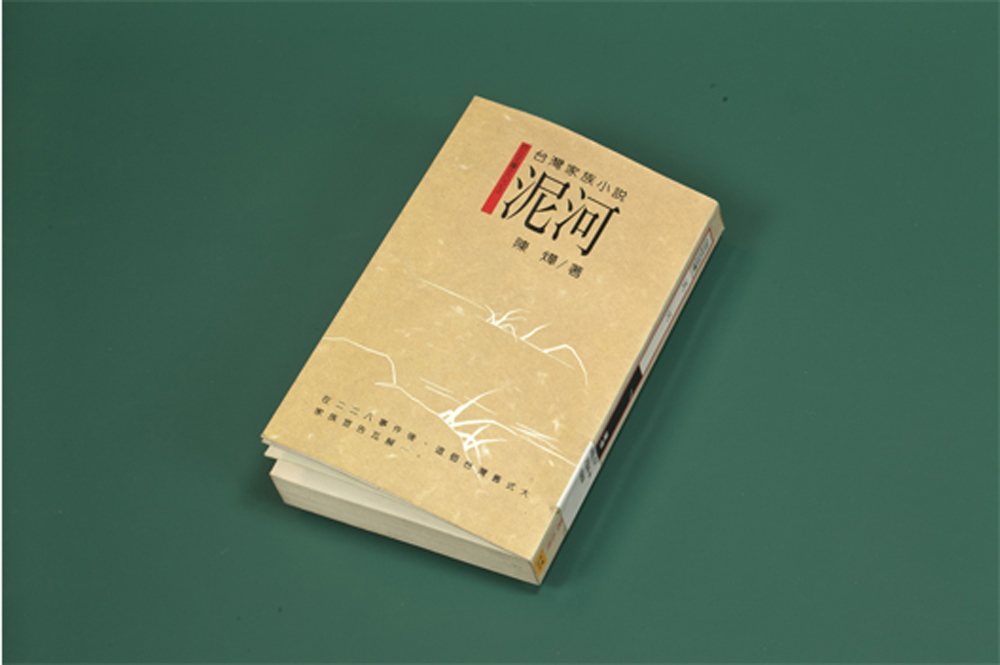
Chen Yeh (1959-2011), aka Chen Chun-hsiu, was a native of Tainan, Taiwan. River of Mud narrates the three-generation saga of the Lin family of Tainan. From the Japanese Colonial Period through to the postwar era, the book’s protagonists experience the tumultuous flow of history and several of Taiwan’s seminal historic turning points. Published in 1989 just as Taiwan finished disassembling Martial Law restrictions, it was one of the first works of literature to directly address the so-called February 28th (228) Incident and the ensuing years of White Terror.
1989; Independence Evening Post, Taipei; book; NMTL collection
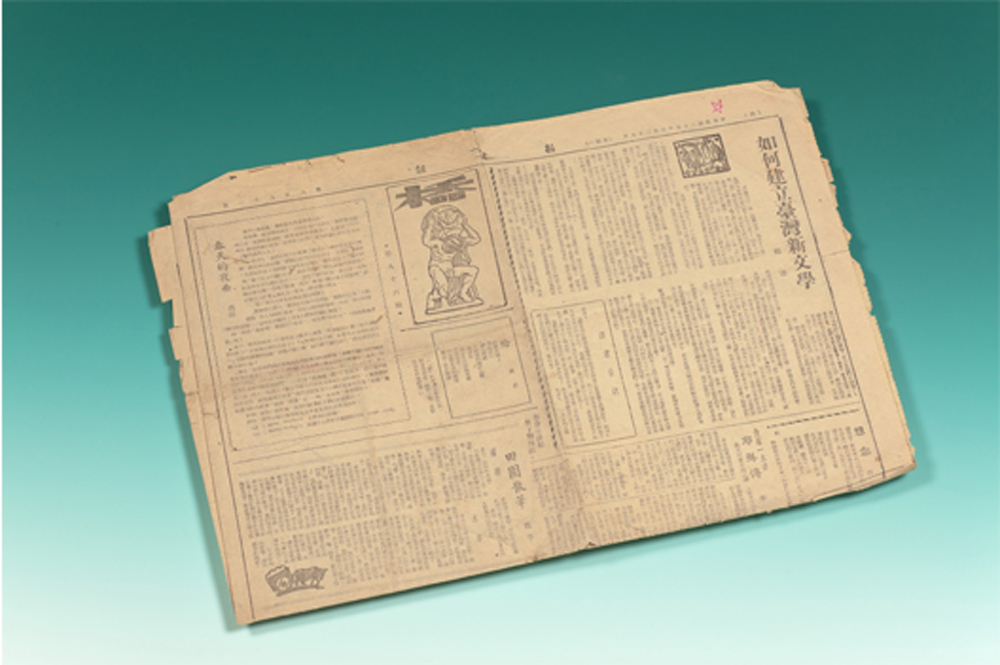
Launched in 1947, the Shin Sheng Daily News’ “Bridge” supplement carried these opening remarks by its chief editor Ko Lei. Ko wrote, “‘Bridge’ symbolizes a passing of the torch from old to new, a transformation from the exotic into familiar friend. It is a new horizon of fertile potential. ‘Bridge’ symbolizes the opening of a new era.” The supplement was intended to bridge local literature into the new postwar era, and stressed conciliation and cooperation in the work ahead.
The Bridge Supplement, Shin Sheng Daily News; August 1st, 1947

Bungei Taiwan published its first issue in 1940 under the editorship of Mitsuru Nishikawa. With the goal of growing to become a “focal pillar of Taiwan culture,” the journal attracted a sweeping array of short stories, poems, theatrical scripts, haikus and tankas from both Taiwanese and Japanese authors. Later issues devoted increasing space to literature related to conflict and the ongoing Pacific War.
1940, first issue; journal; donated by Long Ying-tsung
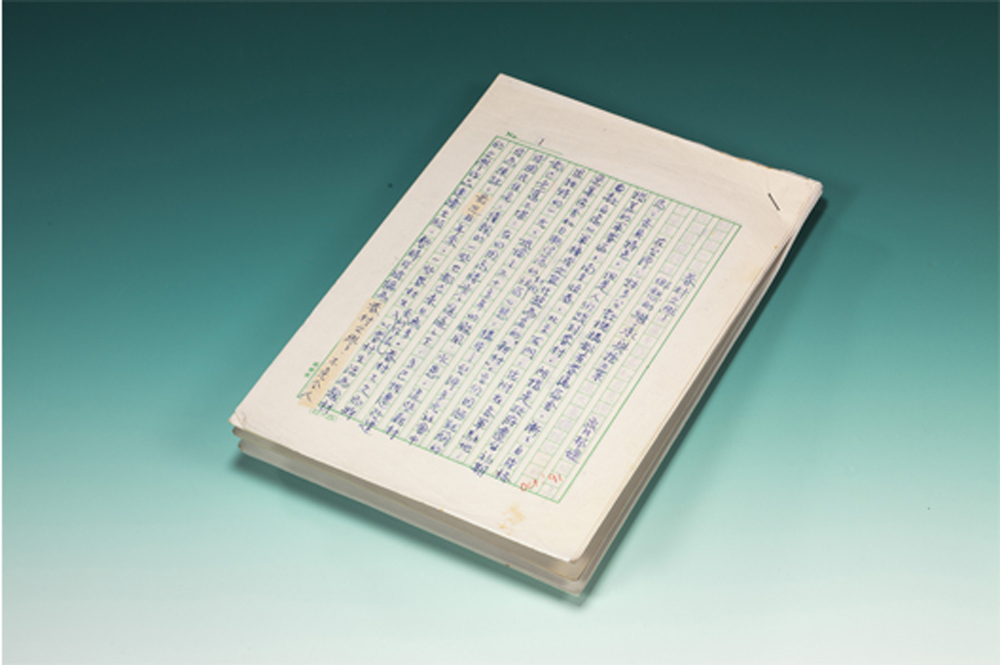
Chi Pang-yuan (1924 - ) is an author from Tieling in Mainland China’s Liaoning Province. This original manuscript is one chapter from Chi’s work, Raging River. From the 1970s, the author began devoting her time to translating Chinese literature into English, opening Taiwan literature to the world. Her efforts have been crucial to developing and growing Taiwan’s increasingly rich literary dialogue with other nations and cultures.
chapter 10; manuscript; provided by Chi Pang-yuan
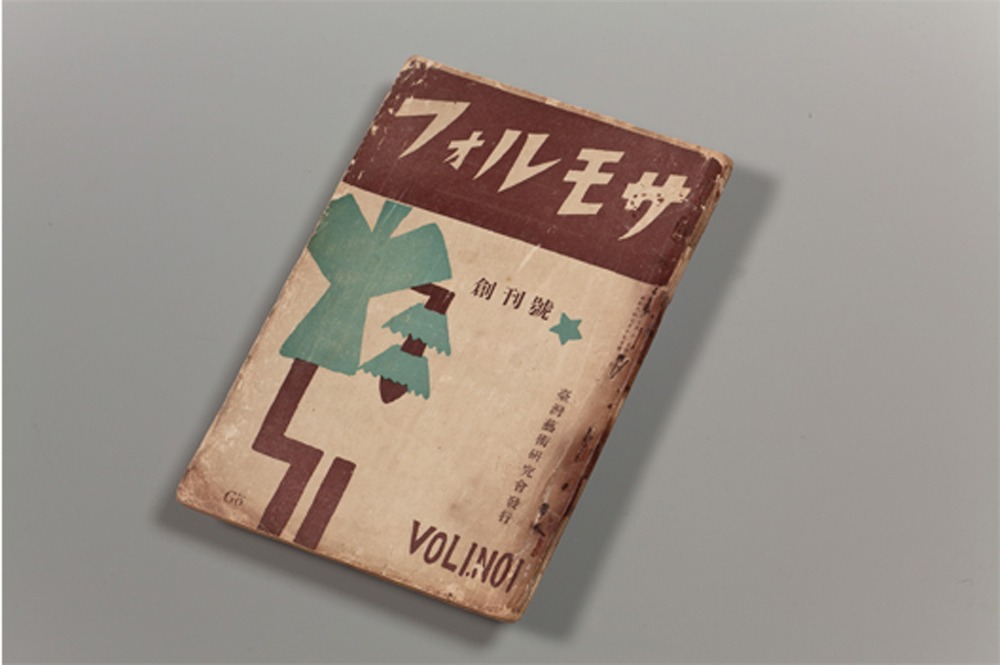
Formosa (フォルモサ) released its first issue in 1933, publishing three volumes in total. The journal was the creation of Taiwanese student members of the Tokyo-based Taiwan Geijutsu Kenkyukai (Taiwan Art Circle), founded by Wang Pai-yuan (Ou Haku-en), Wu Kuen-Hwang and Wu Yong-fu. Su Wei-hsiung served as its chief editor. Content focused on articles and literary works inspired by nativist and socialist ideals.
1933; journal; donated by Huang Teh-shih

Literary Review began publishing in 1956 with Hsia Chi-an as chief editor. In an era of virulent anti-communist rhetoric, authors Hsia Chi-an, Wu Lu-chin and Lin I-liang created Literary Review as a springboard for open thought and free expression.
1956; journal; donated by Chang Mo
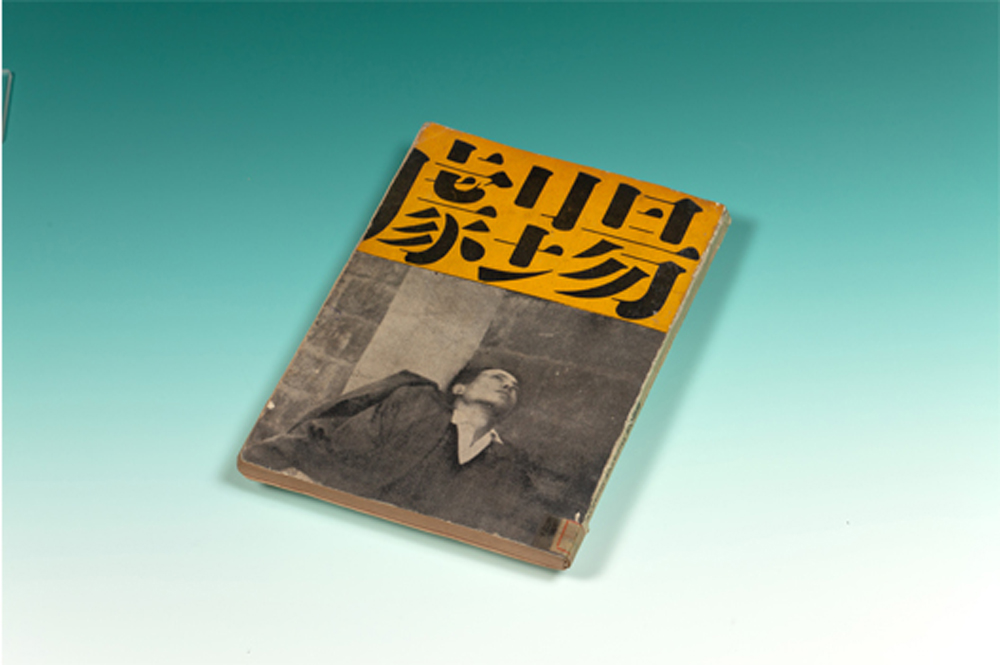
Theater released a total of nine volumes since releasing its first issue in 1965. The journal brought avant-garde and modernist art trends to Martial Law-era Taiwan, looking to trounce stifling conformity with creativity. Theater published original contributions from domestic literary authors, screenwriters and theater playwrights and important foreign theatrical and literary works in translation.
1965; journal; donated by Cheng Tsai-ching
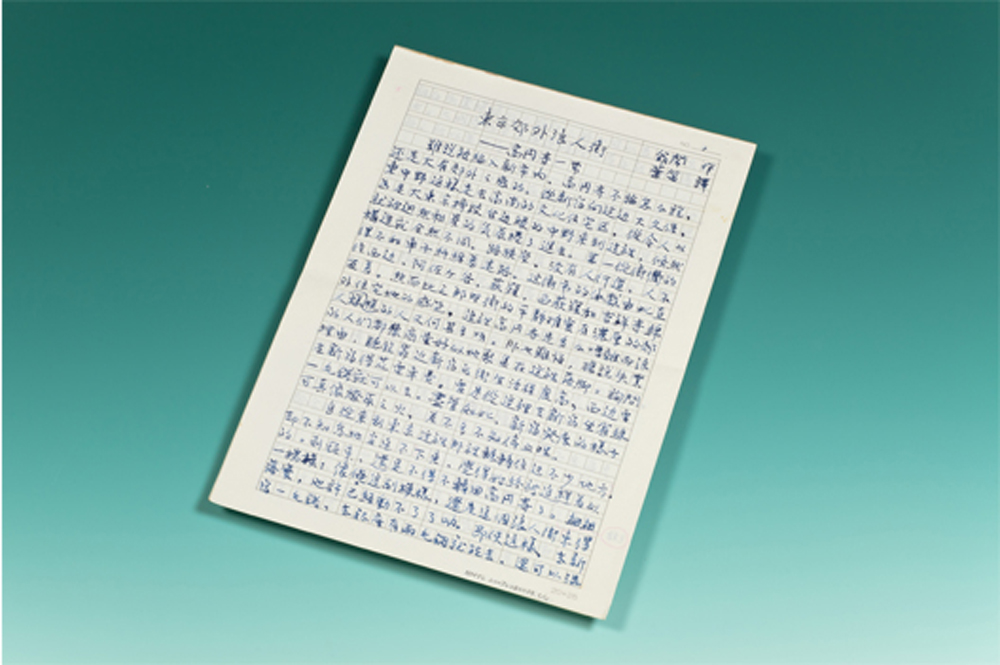
Ong Nao (1908 – unknown) was a native of Shetou in Changhua County, Taiwan. After arriving in Tokyo in 1934 as a student, he moved to Koenji on the city’s outskirts, living the life of a starving artist. This piece sumptuously describes the life of the idealistic, youthful art community that pervaded 1930s Koenji – a place with which he had intimate familiarity.
manuscript of translation by Yeh Ti; donated by Yeh Chin-chin

Lin Yao-teh (1963-1996) was an author from Taipei City, Taiwan. Lin was an advocate of urban literature during the 1980s, producing many original works in the genre. Critics note Lin held a deep-set humanistic concern for the changes, contradictions and conflicts inherent in modern society. He used “city” and “sea” as literary foils.
manuscript; Great Sea Journal of Poetry (founded by Chu Hsueh-shu)
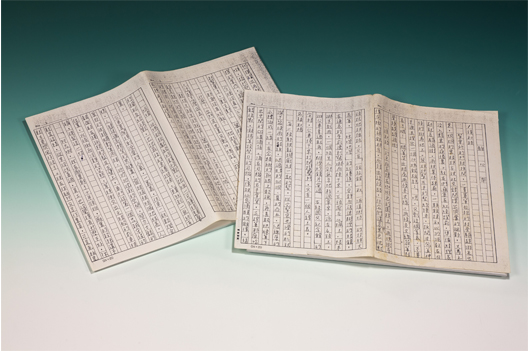
Chiu Miao-chin (1969-1995) was a native of Changhua, Taiwan. The original manuscript of Eccentricities survives today only in photocopy. This piece has all the hallmarks of meta-fiction. Surrounded by urban bustle, Chiu describes in rich verbiage capitalism’s corrosive decay of the family and social mores.
1990; manuscript; provided by Lai Hsiang-yin
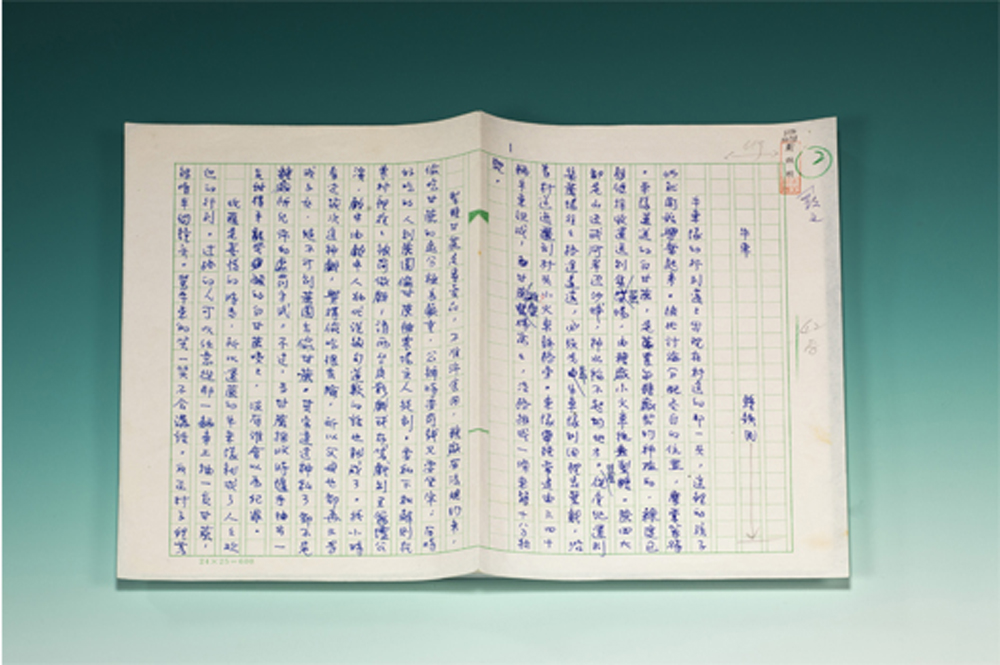
Chung Tieh-min (1941-2011) was an author from Meinong in Kaohsiung County, Taiwan. The author’s many works, set in rural Taiwan, highlighted the imperative importance of preserving rural ways and the environment – movements in which he was personally very active. “Yu Chung-Hsiung’s Spring” takes on the chronic rural issues of public education and continuing education past the junior high school level. It is a humanist, socially relevant work.
donated by Cheng Chiong-ming
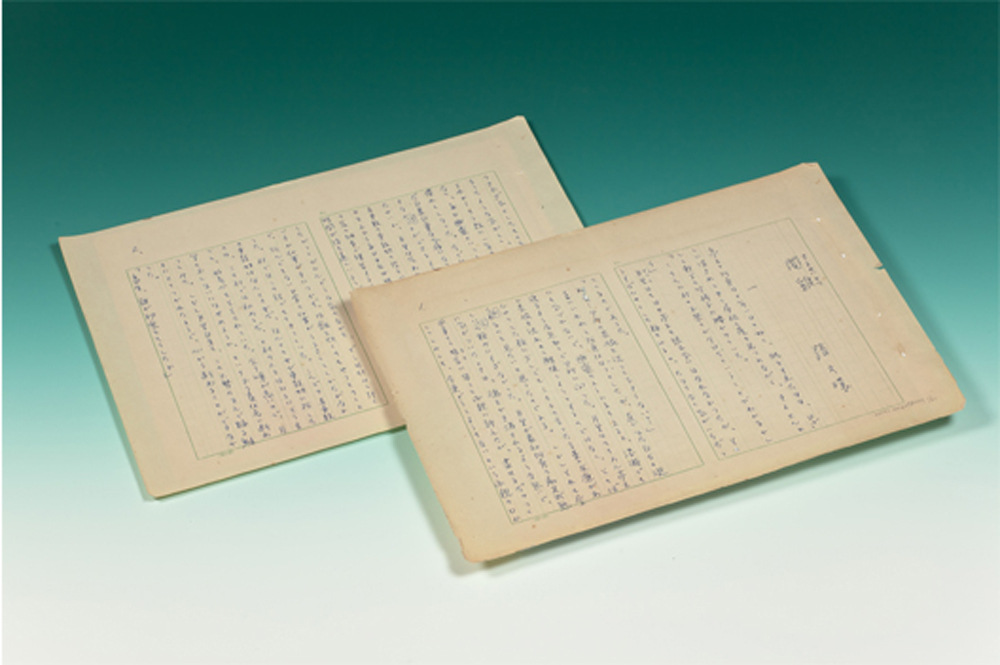
Chang Wen-huan (1909-1978) was a native of Meishan in Chiayi County, Taiwan. He finished The Castrated Cock in 1942, which was published in Vol. 2, No. 3 of Taiwan Bungei (Taiwan Literature). It narrates the story of his female protagonist’s difficult journey from fatalism to enlightenment. In gradually assuming authority over her own body and future, the author takes an innovative approach to dissecting and exposing the severe and callous nature traditional culture.
clean manuscript; donated by Chang Yu-huan

Lee Kui-hsien (1937 - ) is an author from Danshui (Tamsui), Taiwan. His original 1980s poem “My Religion is Love” describes the poet’s passion for his native soil and home as well as his disdain for “truth seekers” and injustice. Lee urges poets to remain “spiritual fortresses” in order to cast a withering spotlight on society’s ills and shortcomings. This, he says, is the true “religion of love.”
K.T. Liu, Taipei, 1997; book; NMTL collection

Ma I-kung (1948 - ) is a native of Taipei City, Taiwan. He was an active writer on environmental issues during the 1980s and strong advocate for environmental education. Ma translated Rachel Carson’s seminal work Silent Spring into Chinese to awaken the Taiwan public to the imperative necessity of humanity to restore balance to its relationship with nature and the environment.
manuscript; donated by Ma I-Kung

Liu Ko-hsiang (1957 - ), aka Liu Tze-huai, is a native of Wurih in Taichung County, Taiwan. Impromptu writings “Bentham Cablecreeper” (later renamed The Cablecreeper’s Winter) and “The Story of a Wound” were included in the author’s 2001 work, At My Most Beautiful. These pieces intermingle poetry with nature and nature with prose to nurture limitless potential.
2000s; manuscript; provided by Liu Ko-hsiang

Yuan Chiong-chiong (1950 - ) is an author from Hsinchu, Taiwan. The author highlighted the interplay between modern sensitivities and everyday affairs to observe the feminine psyche and changes in male – female relational norms against the backdrop of the 1980s “economic miracle” and unprecedented prosperity. This work is a deep commentary on contemporary emotional issues.
clean manuscript; provided by Yuan Chiong-chiong

Liao Hui-ying (1948 - ) is a native of Fengyuan in Taichung County, Taiwan. This 1980s piece reflects on the female protagonist’s journey from childhood to marriage. Rapeseed is a hardy plant grown in Taiwan, surviving in even the poorest of soils. Liao chose the title as a metaphor for the inherent resilience of women.
clean manuscript; provided by Liao Hui-ying
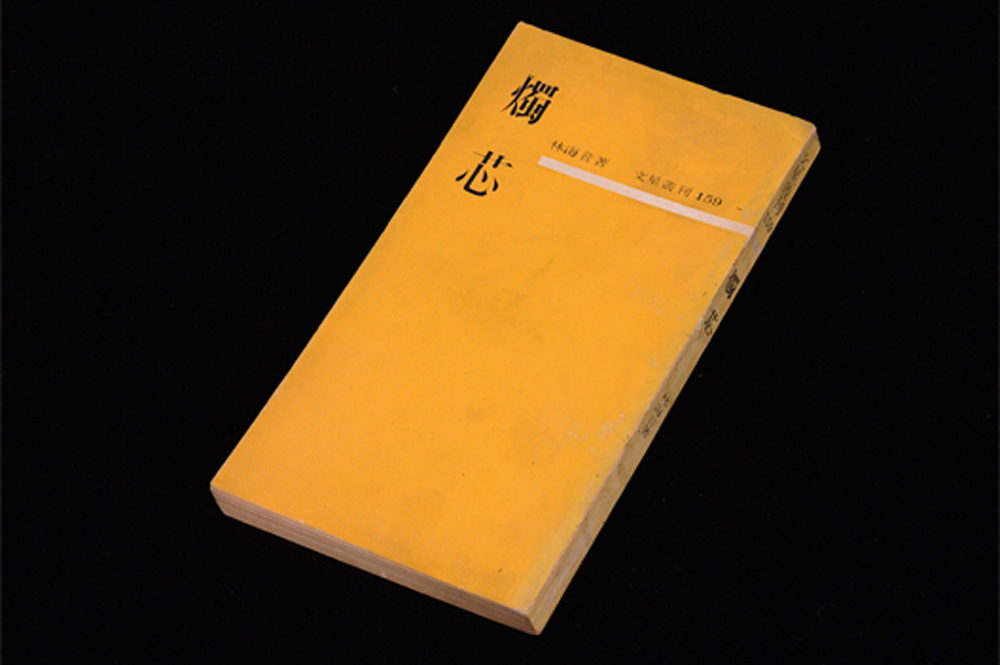
Lin Hai-yin (1918-2001) was a native of Toufen in Miaoli County, Taiwan. She used “candle” to represent the poor fate of women in traditional, conservative society. Her writings steer clear of bitter outcries and tearful pleadings, but nevertheless very effectively convey the endless sorrows of women in calm, even conciliatory, words.
2004; clean manuscript; donated by Hsia Tsu-chuo
1981; Literature Press, Taipei; book; provided by the NMTL
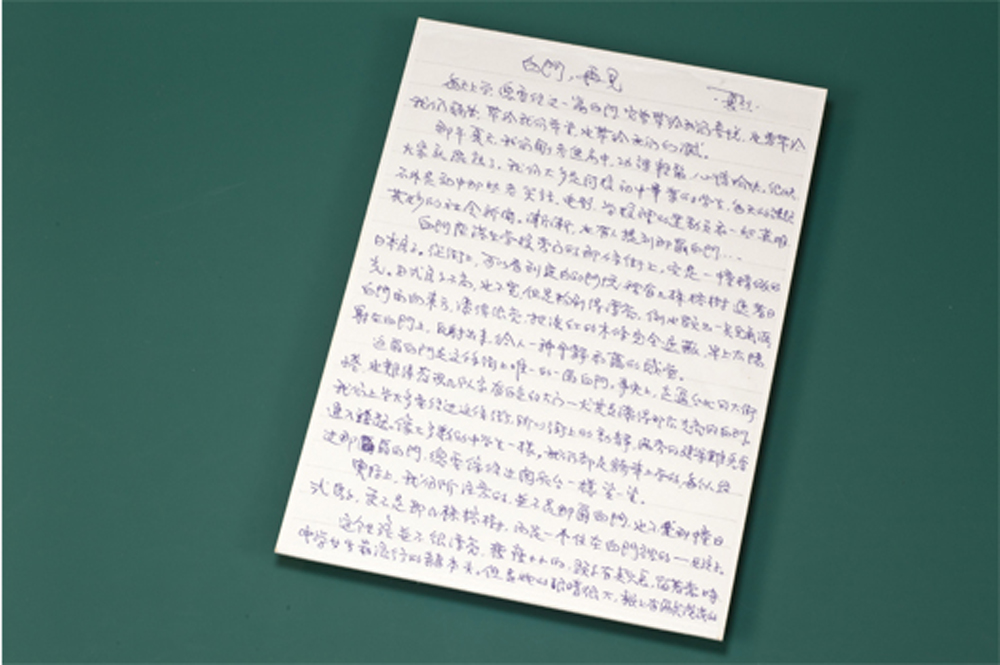
Hsia Lieh (1940 - ), aka Hsia Tzu-chuo, was born in Beijing and spent his formative years in Taipei. White Gate, Farewell!, a short essay Hsia published in his high school newspaper, effervesces teenage brashness. Although almost never spoken, the name “White Gate” – an allusion to the main gate of Taiwan’s best boy’s high school –stirs a fiery passion in young men’s souls that ultimately fizzles into disappointment. Such are the days of youth.
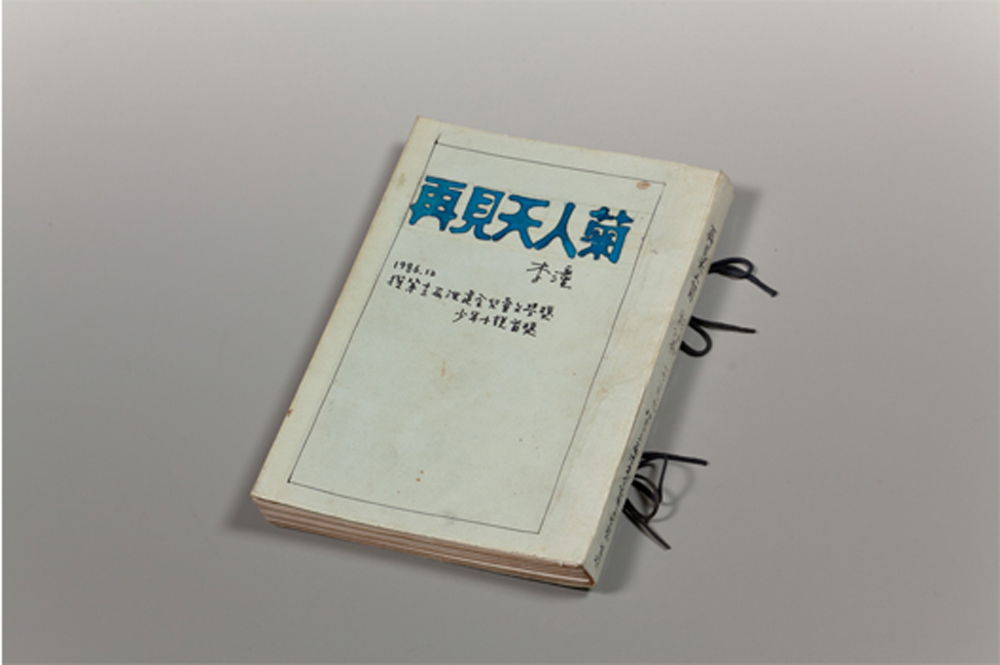
Lee Tung (1953-2004), aka Lai Hsi-an, is an author from Hualien in eastern Taiwan. Set in the Penghu Archipelago, this novel tells the story of seven youth who make a pact to meet up again two decades later. The pact proves difficult to fulfill, but elicits deep-set emotions and memories. Narrating the changing ebb and flow of life, Lee takes a romantic, nostalgic tack to tell the life stories of his characters.
1990s; manuscript; donated by Chu Chien-tai
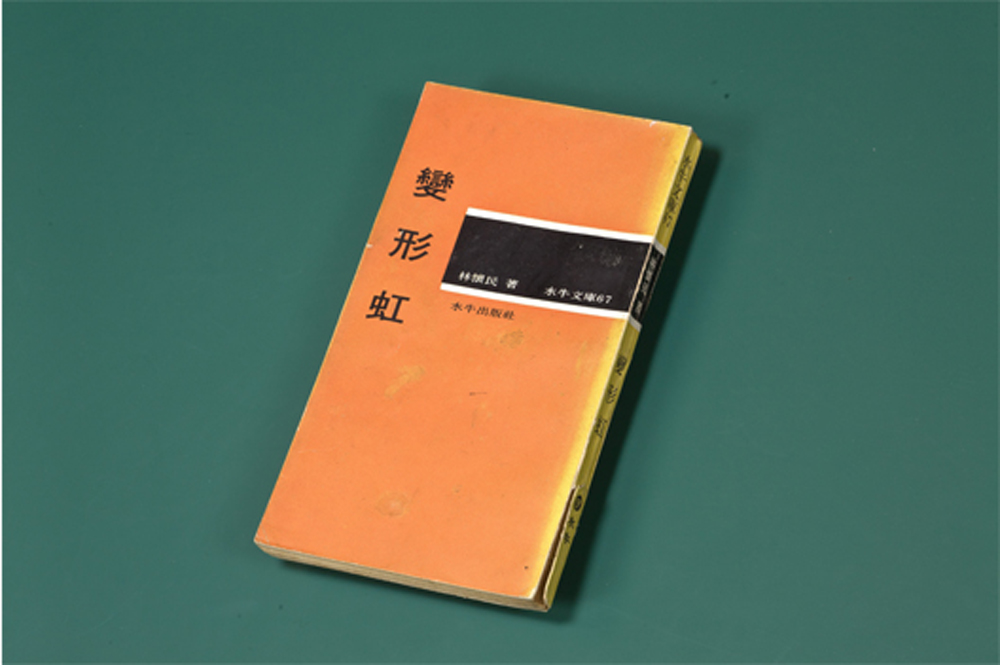
Lin Huai-min (1947 - ) is an author from Xingang in Chiayi County, Taiwan. Deformed Rainbow was Lin’s first published novel. It describes a university student’s fruitless search for purpose in a life he finds stiflingly boring. His death and passage into the spirit world still fails to bring happiness. The dark frustrations of youth, the fast pace of social change and lack of hope all pervade the palpable “boredom” of youth.
1968; Buffalo Book Co., Taipei; book; NMTL collection

Cheng Ching-wen (1932 - ) is an author from Taipei City, Taiwan. His short story Acacia Flowers follows the story of its female protagonist. It uses a light, easygoing style to highlight the conservatism and separation imposed by tradition on the two sexes. Speaking softly of fading time and unfinished business, the author encourages the reader to think about what he or she would do differently if time could be reversed.
1980s; manuscript; provided by Cheng Ching-wen

Ping Lu (1953 - ) is a native of Kaohsiung, Taiwan. Home on the Crossroads is a short story included in her Correspondence with a Centenarian. The narrative describes history as a bill awaiting payment and uses human relationships as a concrete example of this idea. Ping deals deftly with interwoven issues of ethnicity and gender, creating in the process her own distinct literary style.
1990s; manuscript; provided by Ping Lu
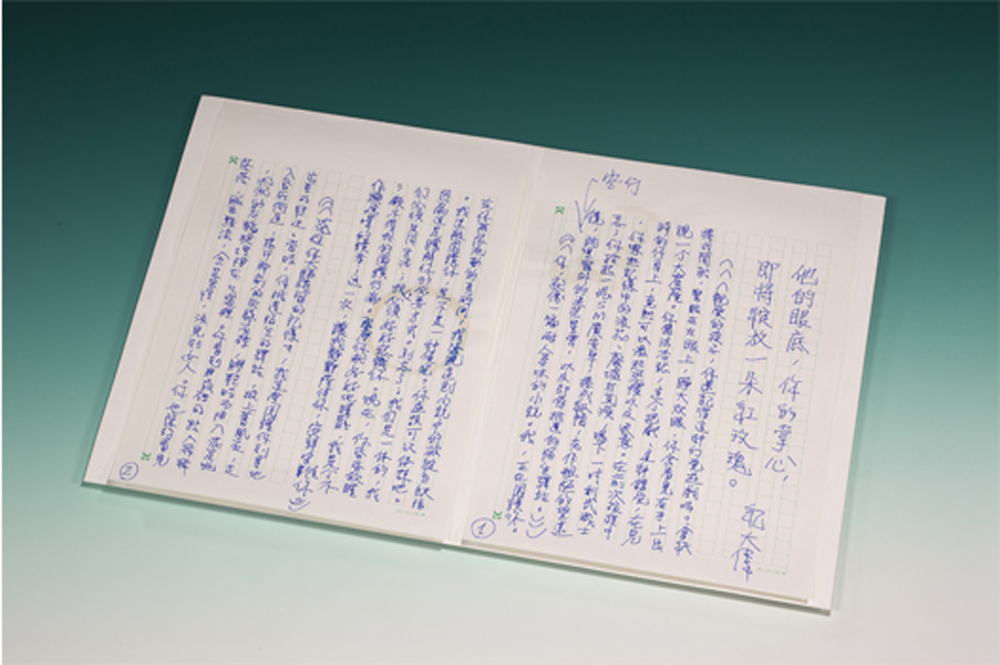
Chi Ta-wei (1972 - ) is a native of Dajia in Taichung County, Taiwan. A Red Rose Soon to Bloom in His Eye and Your Palm, published around 2000, was included in the anthology World of the Senses. The author sees the concept of gender as significantly more fluid than the traditional binary model. The deviant sperm in the story is the straw that breaks the back of the mythological underpinnings of heterosexual love.
clean manuscript; provided by Chi Ta-wei
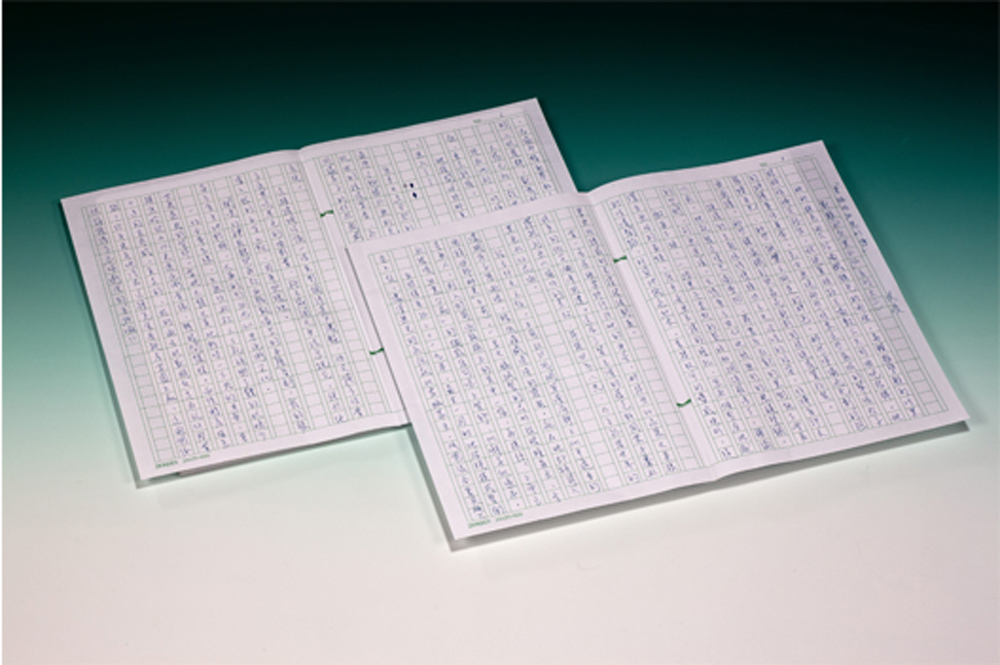
Hung Ling (1971 - ) is a native of Taichung, Taiwan. Selected Biographies, an original work of science fiction, is a hybrid linguistic and literary work as well. This work in the sensual genre treats “blood” as the outward manifestation of infatuation with beauty and the motivation for continued creativity.
clean manuscript; provided by Hung Ling

This is primarily a compilation of correspondence kept by Tu Kuo-ching related to his ideas and plans for publishing the journal Taiwan Literature English Translation Series in the United States.

Zhang Jinzhong (1956 - ), a native of Pahang, Malaysia, produced this extensive academic discussion of Chinese-language literature in Malaysia. The manuscript on display here was the author’s final markup copy finished up before the book went to press.
manuscript; donated by Zhang Jinzhong

Huang Jinshu (1967 - ) is an author from the Malaysian state of Johor Bahru. This work suggests the increasing profile of Malaysia’s Chinese-language literature in Taiwan literary circles. This work drew on liberal art sources in Taiwan to elicit the history, present and future of Chinese-language literature in Malaysia as well as its relationship to Mainland Chinese and Taiwanese literary circles.
manuscript; provided by Huang Jinshu